Shows
 VETchat by The Webinar VetVets In Mind: Resources For Mental Health In The Veterinary Profession - Mark Johnston | VETchat by The Webinar VetJoining Anthony for this episode of VETchat by The Webinar Vet is Mark Johnston, CEO of Vetstream and Founder & Director of Vets in Mind. Vets in Mind is a not for profit organisation which aims to be a source of quality information about mental health and wellness for the veterinary market, providing information from credible sources, case studies from our profession and to signpost people to programmes run by various associations, organizations, charities and support groups around the world for all members of the veterinary market whether they are in practice, academia or companies and charities in the veterinary...2023-08-1139 min
VETchat by The Webinar VetVets In Mind: Resources For Mental Health In The Veterinary Profession - Mark Johnston | VETchat by The Webinar VetJoining Anthony for this episode of VETchat by The Webinar Vet is Mark Johnston, CEO of Vetstream and Founder & Director of Vets in Mind. Vets in Mind is a not for profit organisation which aims to be a source of quality information about mental health and wellness for the veterinary market, providing information from credible sources, case studies from our profession and to signpost people to programmes run by various associations, organizations, charities and support groups around the world for all members of the veterinary market whether they are in practice, academia or companies and charities in the veterinary...2023-08-1139 min Vetlexicon (Canis, Felis, Lapis, Exotis, Equis and Bovis)Causes of Blindness in Cattle Part 2c and Final Episode (Acquired local unilateral or bilateral conditions; and neonatal/congenital conditions) - Vetlexicon BovisBlindness is a loss of vision in one or both eyes and be central or peripheral:
Central blindness is associated with lesions within the forebrain. Animals typically present with a depressed menace response in one or both eyes, while the papillary light reflex (PLR) remains intact.
In cases of Peripheral blindness, the menace reflex and PLR are absent.
Causes of blindness - Episode 2c (acquired unilateral or bilateral blindness: systemic conditions)
This podcasts is divided into four episodes giving brief summaries of the conditions listed and is designed to be a useful overview. More detailed...2021-10-0815 min
Vetlexicon (Canis, Felis, Lapis, Exotis, Equis and Bovis)Causes of Blindness in Cattle Part 2c and Final Episode (Acquired local unilateral or bilateral conditions; and neonatal/congenital conditions) - Vetlexicon BovisBlindness is a loss of vision in one or both eyes and be central or peripheral:
Central blindness is associated with lesions within the forebrain. Animals typically present with a depressed menace response in one or both eyes, while the papillary light reflex (PLR) remains intact.
In cases of Peripheral blindness, the menace reflex and PLR are absent.
Causes of blindness - Episode 2c (acquired unilateral or bilateral blindness: systemic conditions)
This podcasts is divided into four episodes giving brief summaries of the conditions listed and is designed to be a useful overview. More detailed...2021-10-0815 min Vetlexicon (Canis, Felis, Lapis, Exotis, Equis and Bovis)Causes of Blindness in Cattle Part 2b (Acquired local unilateral or bilateral conditions; and neonatal/congenital conditions) - Vetlexicon BovisBlindness is a loss of vision in one or both eyes and be central or peripheral:
Central blindness is associated with lesions within the forebrain. Animals typically present with a depressed menace response in one or both eyes, while the papillary light reflex (PLR) remains intact.
In cases of Peripheral blindness, the menace reflex and PLR are absent.
Causes of blindness - Episode 2b (acquired unilateral or bilateral blindness: systemic conditions)
This podcasts is divided into four episodes giving brief summaries of the conditions listed and is designed to be a useful overview. More detailed...2021-10-0819 min
Vetlexicon (Canis, Felis, Lapis, Exotis, Equis and Bovis)Causes of Blindness in Cattle Part 2b (Acquired local unilateral or bilateral conditions; and neonatal/congenital conditions) - Vetlexicon BovisBlindness is a loss of vision in one or both eyes and be central or peripheral:
Central blindness is associated with lesions within the forebrain. Animals typically present with a depressed menace response in one or both eyes, while the papillary light reflex (PLR) remains intact.
In cases of Peripheral blindness, the menace reflex and PLR are absent.
Causes of blindness - Episode 2b (acquired unilateral or bilateral blindness: systemic conditions)
This podcasts is divided into four episodes giving brief summaries of the conditions listed and is designed to be a useful overview. More detailed...2021-10-0819 min Vetlexicon (Canis, Felis, Lapis, Exotis, Equis and Bovis)Causes of Blindness in Cattle Part 2a (Acquired unilateral or bilateral blindness: systemic conditions) - Vetlexicon BovisBlindness is a loss of vision in one or both eyes and be central or peripheral:
Central blindness is associated with lesions within the forebrain. Animals typically present with a depressed menace response in one or both eyes, while the papillary light reflex (PLR) remains intact.
In cases of Peripheral blindness, the menace reflex and PLR are absent.
Causes of blindness - Episode 2a (acquired unilateral or bilateral blindness: systemic conditions)
This podcasts is divided into four episodes giving brief summaries of the conditions listed and is designed to be a useful overview. More detailed...2021-10-0815 min
Vetlexicon (Canis, Felis, Lapis, Exotis, Equis and Bovis)Causes of Blindness in Cattle Part 2a (Acquired unilateral or bilateral blindness: systemic conditions) - Vetlexicon BovisBlindness is a loss of vision in one or both eyes and be central or peripheral:
Central blindness is associated with lesions within the forebrain. Animals typically present with a depressed menace response in one or both eyes, while the papillary light reflex (PLR) remains intact.
In cases of Peripheral blindness, the menace reflex and PLR are absent.
Causes of blindness - Episode 2a (acquired unilateral or bilateral blindness: systemic conditions)
This podcasts is divided into four episodes giving brief summaries of the conditions listed and is designed to be a useful overview. More detailed...2021-10-0815 min Vetlexicon (Canis, Felis, Lapis, Exotis, Equis and Bovis)Causes of Blindness in Cattle Part 1 (Acquired local unilateral or bilateral conditions; and neonatal/congenital conditions) - Vetlexicon BovisBlindness is a loss of vision in one or both eyes and be central or peripheral:
Central blindness is associated with lesions within the forebrain. Animals typically present with a depressed menace response in one or both eyes, while the papillary light reflex (PLR) remains intact.
In cases of Peripheral blindness, the menace reflex and PLR are absent.
Causes of blindness
This Topic is divided into 4 episodes giving brief summaries of the conditions listed and is designed to be a useful overview. More detailed information about specific diseases and causal organisms etc can be...2021-10-0808 min
Vetlexicon (Canis, Felis, Lapis, Exotis, Equis and Bovis)Causes of Blindness in Cattle Part 1 (Acquired local unilateral or bilateral conditions; and neonatal/congenital conditions) - Vetlexicon BovisBlindness is a loss of vision in one or both eyes and be central or peripheral:
Central blindness is associated with lesions within the forebrain. Animals typically present with a depressed menace response in one or both eyes, while the papillary light reflex (PLR) remains intact.
In cases of Peripheral blindness, the menace reflex and PLR are absent.
Causes of blindness
This Topic is divided into 4 episodes giving brief summaries of the conditions listed and is designed to be a useful overview. More detailed information about specific diseases and causal organisms etc can be...2021-10-0808 min Vetlexicon (Canis, Felis, Lapis, Exotis, Equis and Bovis)Aspiration pneumonia in Cattle - Vetlexicon Bovis
Cause: Iatrogenic aspiration of material may occur with incorrect drenching, syringe dosing and passage of a nasogastric tube into the trachea and the administration of fluids/ medications/ milk.
Any disease leading to pharyngeal or esophageal dysphagia may lead to aspiration of food, water and saliva into the trachea and the rest of the respiratory tract, eg esophageal obstruction.
Neurological disorders may affect the control of swallowing and lead to pharyngeal paralysis or paresis.
Signs: see below.
Diagnosis: see below.
Treatment: Measures to specifically address the cause of the aspiration and prevent its further occurrence.
Broad...2021-10-0818 min
Vetlexicon (Canis, Felis, Lapis, Exotis, Equis and Bovis)Aspiration pneumonia in Cattle - Vetlexicon Bovis
Cause: Iatrogenic aspiration of material may occur with incorrect drenching, syringe dosing and passage of a nasogastric tube into the trachea and the administration of fluids/ medications/ milk.
Any disease leading to pharyngeal or esophageal dysphagia may lead to aspiration of food, water and saliva into the trachea and the rest of the respiratory tract, eg esophageal obstruction.
Neurological disorders may affect the control of swallowing and lead to pharyngeal paralysis or paresis.
Signs: see below.
Diagnosis: see below.
Treatment: Measures to specifically address the cause of the aspiration and prevent its further occurrence.
Broad...2021-10-0818 min Vetlexicon (Canis, Felis, Lapis, Exotis, Equis and Bovis)Aspiration Pneumonia in Cattle - Vetlexicon BovisCause: Iatrogenic aspiration of material may occur with incorrect drenching, syringe dosing and passage of a nasogastric tube into the trachea and the administration of fluids/ medications/ milk.
Any disease leading to pharyngeal or esophageal dysphagia may lead to aspiration of food, water and saliva into the trachea and the rest of the respiratory tract, eg esophageal obstruction.
Neurological disorders may affect the control of swallowing and lead to pharyngeal paralysis or paresis.
Signs: see below.
Diagnosis: see below.
Treatment: Measures to specifically address the cause of the aspiration and prevent its further occurrence.2021-09-0800 min
Vetlexicon (Canis, Felis, Lapis, Exotis, Equis and Bovis)Aspiration Pneumonia in Cattle - Vetlexicon BovisCause: Iatrogenic aspiration of material may occur with incorrect drenching, syringe dosing and passage of a nasogastric tube into the trachea and the administration of fluids/ medications/ milk.
Any disease leading to pharyngeal or esophageal dysphagia may lead to aspiration of food, water and saliva into the trachea and the rest of the respiratory tract, eg esophageal obstruction.
Neurological disorders may affect the control of swallowing and lead to pharyngeal paralysis or paresis.
Signs: see below.
Diagnosis: see below.
Treatment: Measures to specifically address the cause of the aspiration and prevent its further occurrence.2021-09-0800 min Vetlexicon (Canis, Felis, Lapis, Exotis, Equis and Bovis)Bluetongue in Cattle - Vetlexicon BovisBluetongue is an infectious viral disease.
It is transmitted by adult female Culicoides spp (biting midges).
Bluetongue can affect domestic and wild ruminants. It can also affect camelids and other herbivores
The disease causes severe facial swelling, mortality, decreased production, affects fertility and places economic strain on producers.
Bluetongue is a notifiable disease in many countries, including the UK.
Cause: bluetongue virus is a genre of genus Orbivirus in the family Reoviridae.
Diagnosis: clinical and pathological findings. Tests include:
C-ELISA.
PCR.
Isolation of the virus through inoculating an embryonated chicken egg with sub...2021-09-0820 min
Vetlexicon (Canis, Felis, Lapis, Exotis, Equis and Bovis)Bluetongue in Cattle - Vetlexicon BovisBluetongue is an infectious viral disease.
It is transmitted by adult female Culicoides spp (biting midges).
Bluetongue can affect domestic and wild ruminants. It can also affect camelids and other herbivores
The disease causes severe facial swelling, mortality, decreased production, affects fertility and places economic strain on producers.
Bluetongue is a notifiable disease in many countries, including the UK.
Cause: bluetongue virus is a genre of genus Orbivirus in the family Reoviridae.
Diagnosis: clinical and pathological findings. Tests include:
C-ELISA.
PCR.
Isolation of the virus through inoculating an embryonated chicken egg with sub...2021-09-0820 min Vetlexicon (Canis, Felis, Lapis, Exotis, Equis and Bovis)Bovine Congenital Erythropoietic Protoporphyria - in Cattle - Vetlexicon BovisThis article discusses Bovine Congenital Erythropoietic Protoporphyria. At the time of publication, there is a lack of substantive literature on this topic and there appears to be some confusion, between publications, as to whether there are two separate disease entities – one type affecting Limousin and Blonde d’Aquitaine cattle and the other affecting Holstein cattle. Both disease presentations are reported to be clinically identical and the management and prognosis of each is also identical, although the pathogenesis is subtly different. Therefore, the Editors have opted to present this as one condition but draw the reader’s attention to the possib...2021-09-0714 min
Vetlexicon (Canis, Felis, Lapis, Exotis, Equis and Bovis)Bovine Congenital Erythropoietic Protoporphyria - in Cattle - Vetlexicon BovisThis article discusses Bovine Congenital Erythropoietic Protoporphyria. At the time of publication, there is a lack of substantive literature on this topic and there appears to be some confusion, between publications, as to whether there are two separate disease entities – one type affecting Limousin and Blonde d’Aquitaine cattle and the other affecting Holstein cattle. Both disease presentations are reported to be clinically identical and the management and prognosis of each is also identical, although the pathogenesis is subtly different. Therefore, the Editors have opted to present this as one condition but draw the reader’s attention to the possib...2021-09-0714 min Vetlexicon (Canis, Felis, Lapis, Exotis, Equis and Bovis)Coccidiosis in Cattle - Vetlexicon BovisCauses: Eimeria spp, E. bovis, E. zuiernii, E. alabamensis, E. aubernensis, E. basiliensis, E. bukidnonensis, E. canadensis, E. cylindrica, E. ellipsoidalis, E. pellita, E. subsherica, E. wyomingensis.
Signs: most infections are non-pathogenic. Diarrhea and dysentery associated with infections of E. bovis and E. zuernii; watery diarrhea with E. alabamensis.
Diagnosis: history, clinical signs, identification of oocysts in feces.
Treatment: diclazuril, toltrazuril, decoquinate.
Prognosis: most infections asymptomatic. Infections with pathogenic species can cause severe diarrhea, dysentery, dehydration and death.
To access a written copy of this information on Vetlexicon Bovis about the veterinary care of cattle...2021-09-0714 min
Vetlexicon (Canis, Felis, Lapis, Exotis, Equis and Bovis)Coccidiosis in Cattle - Vetlexicon BovisCauses: Eimeria spp, E. bovis, E. zuiernii, E. alabamensis, E. aubernensis, E. basiliensis, E. bukidnonensis, E. canadensis, E. cylindrica, E. ellipsoidalis, E. pellita, E. subsherica, E. wyomingensis.
Signs: most infections are non-pathogenic. Diarrhea and dysentery associated with infections of E. bovis and E. zuernii; watery diarrhea with E. alabamensis.
Diagnosis: history, clinical signs, identification of oocysts in feces.
Treatment: diclazuril, toltrazuril, decoquinate.
Prognosis: most infections asymptomatic. Infections with pathogenic species can cause severe diarrhea, dysentery, dehydration and death.
To access a written copy of this information on Vetlexicon Bovis about the veterinary care of cattle...2021-09-0714 min Vetlexicon (Canis, Felis, Lapis, Exotis, Equis and Bovis)Cutaneous Pythiosis in Cattle - Vetlexicon Bovis
Cause: the etiological agent for cutaneous pythiosis is Pythium insidiosum.
Signs: multifocal, tumor like, chronic, granulomatous masses with draining fistulas, extensive tissue ulceration and secondary bacterial infections of the limb and sometimes ventral regions of the body.
Diagnosis: RT-PCR, Elisa.
Treatment: supportive.
Prognosis: good spontaneous recovery over several weeks to months.
Geographic incidence
Tropical and Subtropical regions of the world with cases being reported in South East Asia, South America, Australia, New Zealand and North America.
Age predisposition
All age groups can be infected, but disease is mostly seen in young animals grazing infected...2021-09-0709 min
Vetlexicon (Canis, Felis, Lapis, Exotis, Equis and Bovis)Cutaneous Pythiosis in Cattle - Vetlexicon Bovis
Cause: the etiological agent for cutaneous pythiosis is Pythium insidiosum.
Signs: multifocal, tumor like, chronic, granulomatous masses with draining fistulas, extensive tissue ulceration and secondary bacterial infections of the limb and sometimes ventral regions of the body.
Diagnosis: RT-PCR, Elisa.
Treatment: supportive.
Prognosis: good spontaneous recovery over several weeks to months.
Geographic incidence
Tropical and Subtropical regions of the world with cases being reported in South East Asia, South America, Australia, New Zealand and North America.
Age predisposition
All age groups can be infected, but disease is mostly seen in young animals grazing infected...2021-09-0709 min Vetlexicon (Canis, Felis, Lapis, Exotis, Equis and Bovis)Crimean-Congo hemorrhagic fever in Cattle - Vetlexicon BovisCrimean-Congo hemorrhagic fever (CCHF) does not cause clinical disease in cattle but is included in Bovis as it is a high priority zoonotic disease which can be fatal to people. Cattle play an important role in its transmission to people.
CCHF is a high priority zoonotic disease; humans acquire CCHFV from either tick bites or exposure to blood or tissue from infected livestock or human patients.
Slaughtermen, Livestock workers and Veterinarians are high risk occupations for human disease in endemic regions.
Cattle play an important role in CCHF by playing host to tick vector species, becoming viremic and...2021-09-0708 min
Vetlexicon (Canis, Felis, Lapis, Exotis, Equis and Bovis)Crimean-Congo hemorrhagic fever in Cattle - Vetlexicon BovisCrimean-Congo hemorrhagic fever (CCHF) does not cause clinical disease in cattle but is included in Bovis as it is a high priority zoonotic disease which can be fatal to people. Cattle play an important role in its transmission to people.
CCHF is a high priority zoonotic disease; humans acquire CCHFV from either tick bites or exposure to blood or tissue from infected livestock or human patients.
Slaughtermen, Livestock workers and Veterinarians are high risk occupations for human disease in endemic regions.
Cattle play an important role in CCHF by playing host to tick vector species, becoming viremic and...2021-09-0708 min Vetlexicon (Canis, Felis, Lapis, Exotis, Equis and Bovis)Epizootic Hemorrhagic Disease in Cattle - Vetlexicon Bovis
Cause: epizootic hemorrhagic disease is caused by a Reoviridae, genus Orbivirus.
Signs: ulcerative stomatitis, pyrexia, dysphagia, respiratory distress, milk drop and production losses.
Diagnosis: virus Isolation. RT-PCR.
Treatment: supportive.
Prognosis: good.
Geographic incidence
EHV is a vector borne disease and its distribution is limited to that of its vector, the culicoides biting midge
EHV has been reported between latitudes 35°S and 49°N with clinical disease reported in North America, Australia, Asia, Africa and more recently in those countries surrounding the Mediterranean basin such as Morocco, Israel, Tunisia, Jordan and Turkey.
To access a written copy of th...2021-09-0708 min
Vetlexicon (Canis, Felis, Lapis, Exotis, Equis and Bovis)Epizootic Hemorrhagic Disease in Cattle - Vetlexicon Bovis
Cause: epizootic hemorrhagic disease is caused by a Reoviridae, genus Orbivirus.
Signs: ulcerative stomatitis, pyrexia, dysphagia, respiratory distress, milk drop and production losses.
Diagnosis: virus Isolation. RT-PCR.
Treatment: supportive.
Prognosis: good.
Geographic incidence
EHV is a vector borne disease and its distribution is limited to that of its vector, the culicoides biting midge
EHV has been reported between latitudes 35°S and 49°N with clinical disease reported in North America, Australia, Asia, Africa and more recently in those countries surrounding the Mediterranean basin such as Morocco, Israel, Tunisia, Jordan and Turkey.
To access a written copy of th...2021-09-0708 min Vetlexicon (Canis, Felis, Lapis, Exotis, Equis and Bovis)Hypersalivation in Cattle - Vetlexicon BovisThe major salivary glands are the parotid, mandibular, sublingual and zygomatic glands
They are made up of Acini glands that secrete a fluid containing mainly water, bicarbonate, electrolytes, mucin and the enzymes amylase and lipase.
The mandibular ducts enter the oral cavity on the ventral surface of the sublingual caruncles.
The parotid gland ducts enter the oral cavity on the cheek opposite the upper 2nd molar.
Cattle produce around 110-180L of saliva per day, with a key role in buffering rumen pH
Saliva is normally produced in response to stimulation of the mouth...2021-09-0710 min
Vetlexicon (Canis, Felis, Lapis, Exotis, Equis and Bovis)Hypersalivation in Cattle - Vetlexicon BovisThe major salivary glands are the parotid, mandibular, sublingual and zygomatic glands
They are made up of Acini glands that secrete a fluid containing mainly water, bicarbonate, electrolytes, mucin and the enzymes amylase and lipase.
The mandibular ducts enter the oral cavity on the ventral surface of the sublingual caruncles.
The parotid gland ducts enter the oral cavity on the cheek opposite the upper 2nd molar.
Cattle produce around 110-180L of saliva per day, with a key role in buffering rumen pH
Saliva is normally produced in response to stimulation of the mouth...2021-09-0710 min Vetlexicon (Canis, Felis, Lapis, Exotis, Equis and Bovis)Manipulating the composition of cow's milk via diet - Vetlexicon Bovis
Butterfat and protein concentrations in milk can both be significantly affected by nutrition.
Nutritional problems may be identified by examination of milk quality, eg using milk recording data available through milk recording organizations such as DHI.
Butterfat and protein levels may be manipulated by dietary methods, to increase the milk price paid to farmers based on constituent contracts, eg cheese production.
To access a written copy of this information on Vetlexicon Bovis about the veterinary care of cattle, please select this link2021-09-0716 min
Vetlexicon (Canis, Felis, Lapis, Exotis, Equis and Bovis)Manipulating the composition of cow's milk via diet - Vetlexicon Bovis
Butterfat and protein concentrations in milk can both be significantly affected by nutrition.
Nutritional problems may be identified by examination of milk quality, eg using milk recording data available through milk recording organizations such as DHI.
Butterfat and protein levels may be manipulated by dietary methods, to increase the milk price paid to farmers based on constituent contracts, eg cheese production.
To access a written copy of this information on Vetlexicon Bovis about the veterinary care of cattle, please select this link2021-09-0716 min Vetlexicon (Canis, Felis, Lapis, Exotis, Equis and Bovis)Mycoplasma wenyonii in Cattle - Vetlexicon BovisM. wenyonii is an incompletely understood organism which might contribute to a range of clinical signs.
A seasonal pattern has been observed in the UK, with most cases occurring in dairy cows during late summer and early autumn.
Arthropods and events involving blood contact are suspected to be involved in transmission. Needles, rectal examination, castration, disbudding, dehorning, fighting, external parasites and wounds are all potential routes of infection. A herd outbreak of M. wenyonii has been reported following herd-wide Bluetongue Bluetongue vaccination.
The disease in dairy cows tends to be relatively minor and self-limiting, but infection of...2021-09-0709 min
Vetlexicon (Canis, Felis, Lapis, Exotis, Equis and Bovis)Mycoplasma wenyonii in Cattle - Vetlexicon BovisM. wenyonii is an incompletely understood organism which might contribute to a range of clinical signs.
A seasonal pattern has been observed in the UK, with most cases occurring in dairy cows during late summer and early autumn.
Arthropods and events involving blood contact are suspected to be involved in transmission. Needles, rectal examination, castration, disbudding, dehorning, fighting, external parasites and wounds are all potential routes of infection. A herd outbreak of M. wenyonii has been reported following herd-wide Bluetongue Bluetongue vaccination.
The disease in dairy cows tends to be relatively minor and self-limiting, but infection of...2021-09-0709 min Vetlexicon (Canis, Felis, Lapis, Exotis, Equis and Bovis)Omphalophlebitis and Omphaloarteritis in Cattle - Vetlexicon BovisOmphalitis is inflammation of the umbilical structures and may include the umbilical arteries, umbilical vein, urachus and/or tissues immediately surrounding the umbilicus.Omphalophlebitis is inflammation and/or infection of the umbilical vein.
Omphaloarteritis is inflammation and/or infection of the umbilical arteries (both or singly).
Cause: acquired or congenital infection and/or trauma of umbilicus and associated structures.
Signs: enlarged umbilicus, possible purulent discharge, pain on palpation, systemically ill/septic calves.
Diagnosis: clinical examination and palpation, ultrasonography, bacteriology.
Treatment: antimicrobials and surgery.
Prognosis: dependent upon extent and severity of infection.Localized infections in clinically well...2021-09-0712 min
Vetlexicon (Canis, Felis, Lapis, Exotis, Equis and Bovis)Omphalophlebitis and Omphaloarteritis in Cattle - Vetlexicon BovisOmphalitis is inflammation of the umbilical structures and may include the umbilical arteries, umbilical vein, urachus and/or tissues immediately surrounding the umbilicus.Omphalophlebitis is inflammation and/or infection of the umbilical vein.
Omphaloarteritis is inflammation and/or infection of the umbilical arteries (both or singly).
Cause: acquired or congenital infection and/or trauma of umbilicus and associated structures.
Signs: enlarged umbilicus, possible purulent discharge, pain on palpation, systemically ill/septic calves.
Diagnosis: clinical examination and palpation, ultrasonography, bacteriology.
Treatment: antimicrobials and surgery.
Prognosis: dependent upon extent and severity of infection.Localized infections in clinically well...2021-09-0712 min Vetlexicon (Canis, Felis, Lapis, Exotis, Equis and Bovis)Ketosis and Fatty Liver Disease in cattle - Vetlexicon Bovis
Cause: the blood accumulates high levels of ketones, usually when the cow is trying to release energy from her body fat and muscle reserves.
Signs: weight loss Approach to the underweight cow, reduced appetite, ketonuria, nervous signs, vocalizing.
Diagnosis: clinical signs in a recently calved cow, cow side blood test, ketonuria, response to treatment.
Treatment: glucose and/or glucocorticoids.
Prognosis: good.
Clinical disease is often an indicator of more widespread subclinical ketosis in the herd.
To access a written copy of this information on Vetlexicon Bovis about the veterinary care of cattle, please select this link2021-09-0717 min
Vetlexicon (Canis, Felis, Lapis, Exotis, Equis and Bovis)Ketosis and Fatty Liver Disease in cattle - Vetlexicon Bovis
Cause: the blood accumulates high levels of ketones, usually when the cow is trying to release energy from her body fat and muscle reserves.
Signs: weight loss Approach to the underweight cow, reduced appetite, ketonuria, nervous signs, vocalizing.
Diagnosis: clinical signs in a recently calved cow, cow side blood test, ketonuria, response to treatment.
Treatment: glucose and/or glucocorticoids.
Prognosis: good.
Clinical disease is often an indicator of more widespread subclinical ketosis in the herd.
To access a written copy of this information on Vetlexicon Bovis about the veterinary care of cattle, please select this link2021-09-0717 min Vetlexicon (Canis, Felis, Lapis, Exotis, Equis and Bovis)Mycotoxicoses in Cattle - Vetlexicon BovisMycotoxicoses are diseases caused by secondary toxic metabolites produced by molds.
Cause: important mycotoxin-producing molds, include Penicillium spp, Claviceps spp, Phomopsis leptostromiformis, Rhizoctonia leguminicola.
Signs: vary depending on toxin and species. Mycotoxins affect almost all organ systems. Ergot and some Penicillium spp produce indole tremorgens which affect the nervous system.
Diagnosis: difficult. Mycotoxin isolation from feed, clinical signs and history, feeding trials.
Treatment: removal of toxin source; supportive therapy.
Prognosis: depends on toxin, dose and clinical course.
To access a written copy of this information on Vetlexicon Bovis about the veterinary care of cattle, please select...2021-09-0715 min
Vetlexicon (Canis, Felis, Lapis, Exotis, Equis and Bovis)Mycotoxicoses in Cattle - Vetlexicon BovisMycotoxicoses are diseases caused by secondary toxic metabolites produced by molds.
Cause: important mycotoxin-producing molds, include Penicillium spp, Claviceps spp, Phomopsis leptostromiformis, Rhizoctonia leguminicola.
Signs: vary depending on toxin and species. Mycotoxins affect almost all organ systems. Ergot and some Penicillium spp produce indole tremorgens which affect the nervous system.
Diagnosis: difficult. Mycotoxin isolation from feed, clinical signs and history, feeding trials.
Treatment: removal of toxin source; supportive therapy.
Prognosis: depends on toxin, dose and clinical course.
To access a written copy of this information on Vetlexicon Bovis about the veterinary care of cattle, please select...2021-09-0715 min Vetlexicon (Canis, Felis, Lapis, Exotis, Equis and Bovis)Obturator Nerve Paralysis in Cattle - Vetlexicon BovisThe obturator nerve is predisposed to traumatic damage, as it passes from the origin in the lumbar region of the spinal cord to the obturator foramen in the floor of the pelvis, medial to the ilium of the pelvis, on each side.
Direct trauma to the nerve is most likely to occur at parturition or through poor management and movement of cows leading to injuries involving sudden abduction of one or more hindlimbs (ie ‘doing the splits’ in the collecting yard.
The calf can injure the nerve by extended pressure (due to dystocia) or tearing as it passes thro...2021-09-0714 min
Vetlexicon (Canis, Felis, Lapis, Exotis, Equis and Bovis)Obturator Nerve Paralysis in Cattle - Vetlexicon BovisThe obturator nerve is predisposed to traumatic damage, as it passes from the origin in the lumbar region of the spinal cord to the obturator foramen in the floor of the pelvis, medial to the ilium of the pelvis, on each side.
Direct trauma to the nerve is most likely to occur at parturition or through poor management and movement of cows leading to injuries involving sudden abduction of one or more hindlimbs (ie ‘doing the splits’ in the collecting yard.
The calf can injure the nerve by extended pressure (due to dystocia) or tearing as it passes thro...2021-09-0714 min Vetlexicon (Canis, Felis, Lapis, Exotis, Equis and Bovis)Severe Fever with Thrombocytopenia Syndrome in Cattle - Vetlexicon BovisSevere Fever with Thrombocytopenia Syndrome is NOT a disease of cattle. It is a human disease, but is included within Bovis as cattle, although unaffected themselves, play a role in this significant human disease and as such those working with cattle should be aware of this condition.
Cause: severe fever with thrombocytopenia syndrome (SFTS) is an emerging tick-borne hemorrhagic viral disease of humans. It is believed to be caused by a tick borne Phlebovirus of the family Bunyviridae, transmitted by the tick Haemaphysalis longicornis, and it can be fatal to affected people. Cattle, and other domestic and wild...2021-09-0708 min
Vetlexicon (Canis, Felis, Lapis, Exotis, Equis and Bovis)Severe Fever with Thrombocytopenia Syndrome in Cattle - Vetlexicon BovisSevere Fever with Thrombocytopenia Syndrome is NOT a disease of cattle. It is a human disease, but is included within Bovis as cattle, although unaffected themselves, play a role in this significant human disease and as such those working with cattle should be aware of this condition.
Cause: severe fever with thrombocytopenia syndrome (SFTS) is an emerging tick-borne hemorrhagic viral disease of humans. It is believed to be caused by a tick borne Phlebovirus of the family Bunyviridae, transmitted by the tick Haemaphysalis longicornis, and it can be fatal to affected people. Cattle, and other domestic and wild...2021-09-0708 min Vetlexicon (Canis, Felis, Lapis, Exotis, Equis and Bovis)Sciatic Nerve Injury in Cattle - Vetlexicon Bovis
Cause: traumatic from calving, intramuscular (IM) injection, ischemic myopathy, compression from abscess, neoplasia, or fractured sacrum, pelvis or proximal femur and associated inflammation/fibrosis.
Signs: those associated with LMN dysfunction including pain, paresis, paralysis, muscle atrophy, hyporeflexia and analgesia in severe cases.
Diagnosis: history and clinical signs plus the ruling out of other causes.
Treatment: analgesia, nursing and physiotherapy.
Prognosis: variable.
Anatomy
The sciatic nerve is the largest nerve in the body. It is formed by fibers originating from spinal cord segments L6-S2.
The...2021-09-0714 min
Vetlexicon (Canis, Felis, Lapis, Exotis, Equis and Bovis)Sciatic Nerve Injury in Cattle - Vetlexicon Bovis
Cause: traumatic from calving, intramuscular (IM) injection, ischemic myopathy, compression from abscess, neoplasia, or fractured sacrum, pelvis or proximal femur and associated inflammation/fibrosis.
Signs: those associated with LMN dysfunction including pain, paresis, paralysis, muscle atrophy, hyporeflexia and analgesia in severe cases.
Diagnosis: history and clinical signs plus the ruling out of other causes.
Treatment: analgesia, nursing and physiotherapy.
Prognosis: variable.
Anatomy
The sciatic nerve is the largest nerve in the body. It is formed by fibers originating from spinal cord segments L6-S2.
The...2021-09-0714 min Vetlexicon (Canis, Felis, Lapis, Exotis, Equis and Bovis)Bracken Poisoning in Cattle - Vetlexicon Bovis
Cause: ingestion of bracken (Pteridium species).
Signs: hemorrhage, pyrexia, loss of condition, intermittent hematuria.
Diagnosis: based on clinical signs, history of exposure and post-mortem findings.
Treatment: supportive, but generally ineffective.
Prognosis: poor.
Geographic incidence
Bracken is one of the most abundant plants in the world.
It is a fern growing throughout the world (except where it is very cold or very dry) and is abundant in woods, heaths, sand dunes, neglected pastures, hedgerows, moors and even in walls, and often dominant over large areas mainly on light well-drained acid soils.
Age predisposition
Younger animals may be...2021-09-0714 min
Vetlexicon (Canis, Felis, Lapis, Exotis, Equis and Bovis)Bracken Poisoning in Cattle - Vetlexicon Bovis
Cause: ingestion of bracken (Pteridium species).
Signs: hemorrhage, pyrexia, loss of condition, intermittent hematuria.
Diagnosis: based on clinical signs, history of exposure and post-mortem findings.
Treatment: supportive, but generally ineffective.
Prognosis: poor.
Geographic incidence
Bracken is one of the most abundant plants in the world.
It is a fern growing throughout the world (except where it is very cold or very dry) and is abundant in woods, heaths, sand dunes, neglected pastures, hedgerows, moors and even in walls, and often dominant over large areas mainly on light well-drained acid soils.
Age predisposition
Younger animals may be...2021-09-0714 min Vetlexicon (Canis, Felis, Lapis, Exotis, Equis and Bovis)Fetotomy in Cattle - Vetlexicon BovisThe technique of fetotomy can be used to deliver part(s) of a dead fetus per vaginum in cases of dystocia.
it can be used in conjunction with traction and manual manipulation to deliver calves in cases of abnormal presentation, position and posture.
Presence of fetal abnormalities (joint ankylosis ie Schmallenberg virus Schmallenberg virus), hydrocephalus or fetal monsters.
In cases of fetomaternal disproportion.
In cases of complete uterine inertia (where cesarean section Cesarean section is not an option).
To access a written copy of this information on Vetlexicon Bovis about the veterinary care...2021-09-0719 min
Vetlexicon (Canis, Felis, Lapis, Exotis, Equis and Bovis)Fetotomy in Cattle - Vetlexicon BovisThe technique of fetotomy can be used to deliver part(s) of a dead fetus per vaginum in cases of dystocia.
it can be used in conjunction with traction and manual manipulation to deliver calves in cases of abnormal presentation, position and posture.
Presence of fetal abnormalities (joint ankylosis ie Schmallenberg virus Schmallenberg virus), hydrocephalus or fetal monsters.
In cases of fetomaternal disproportion.
In cases of complete uterine inertia (where cesarean section Cesarean section is not an option).
To access a written copy of this information on Vetlexicon Bovis about the veterinary care...2021-09-0719 min Vetlexicon (Canis, Felis, Lapis, Exotis, Equis and Bovis)Ventral Edema in Cattle - Vetlexicon Bovis“Edema” is defined as an abnormal accumulation of fluid in the interstitial spaces of tissues or in body cavities.
Ventral edema is also known as udder edema and is the accumulation of fluid in the interstitial tissues of the mammary gland and tissues cranial and caudal to the udder.
For the purposes of this article, ventral edema of physiological origin will be classified as ‘udder edema’.
Udder edema can result from pathological processes or can be physiological.
The exact mechanism for the development of physiological udder edema is unknown.
Physiological udder edema is seen in heifers and cows in...2021-09-0710 min
Vetlexicon (Canis, Felis, Lapis, Exotis, Equis and Bovis)Ventral Edema in Cattle - Vetlexicon Bovis“Edema” is defined as an abnormal accumulation of fluid in the interstitial spaces of tissues or in body cavities.
Ventral edema is also known as udder edema and is the accumulation of fluid in the interstitial tissues of the mammary gland and tissues cranial and caudal to the udder.
For the purposes of this article, ventral edema of physiological origin will be classified as ‘udder edema’.
Udder edema can result from pathological processes or can be physiological.
The exact mechanism for the development of physiological udder edema is unknown.
Physiological udder edema is seen in heifers and cows in...2021-09-0710 min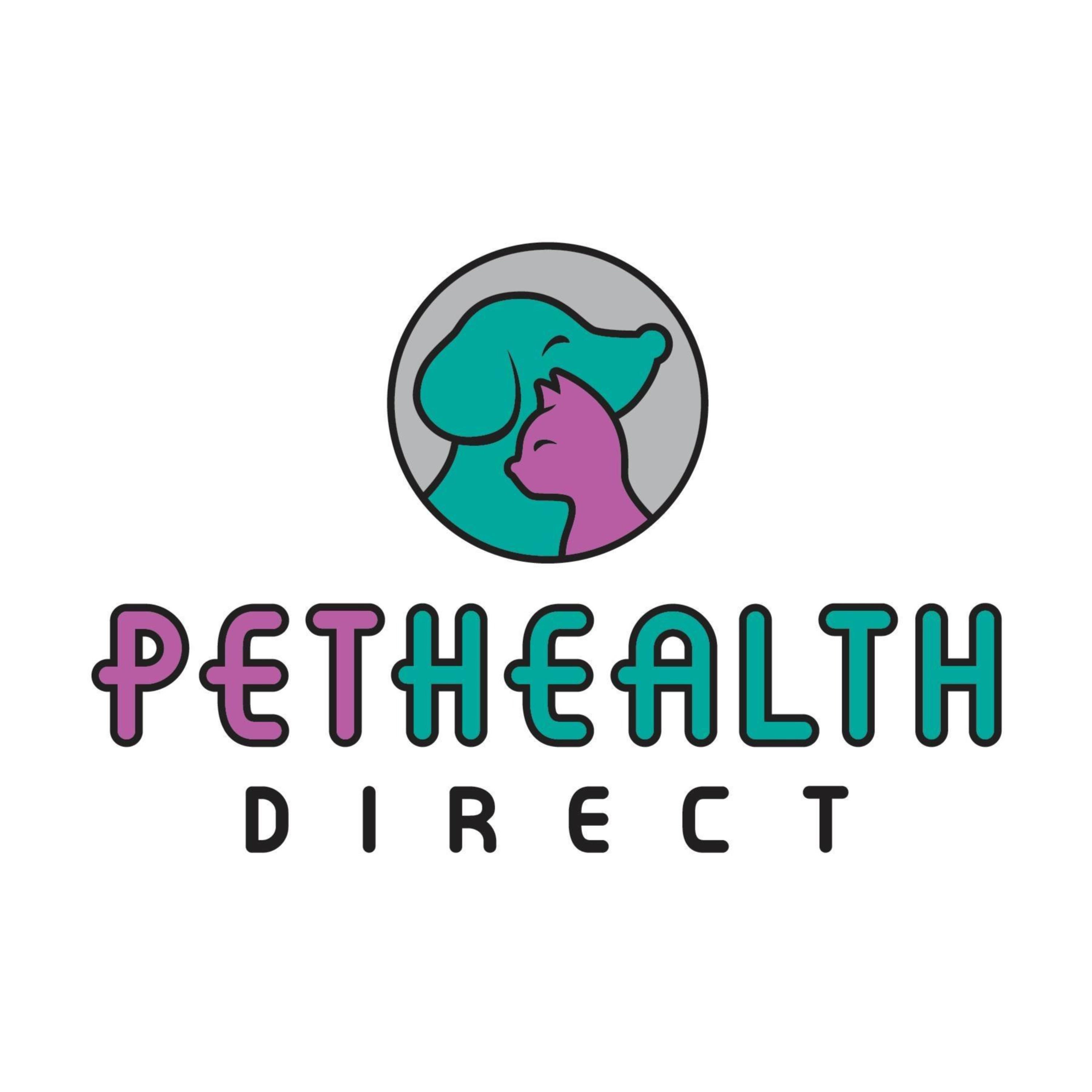 Pet Health DirectAntibiotic treatmentSince the discovery of penicillin by Alexander Flemming in 1928, antibiotics have saved millions of lives, in both human and veterinary medicine. They are an invaluable tool used against many diseases and are incredibly useful in veterinary as well as human medicine.
This episode is taken from Vetstream's Vetlexicon Felis and provides information to help cat owners understand more about this condition.
Select this link to read more information about the health and welfare of your cat2021-07-1511 min
Pet Health DirectAntibiotic treatmentSince the discovery of penicillin by Alexander Flemming in 1928, antibiotics have saved millions of lives, in both human and veterinary medicine. They are an invaluable tool used against many diseases and are incredibly useful in veterinary as well as human medicine.
This episode is taken from Vetstream's Vetlexicon Felis and provides information to help cat owners understand more about this condition.
Select this link to read more information about the health and welfare of your cat2021-07-1511 min Pet Health DirectConjunctivitis in catsIf your cat has a sore or red eye, or there is discharge from the eye then it is important to seek veterinary advice. Your cat may have an infection in the eye but this can also be caused by foreign body (such as a grass seed) caught under the eyelid. It is important that diseases of the eye are treated quickly to prevent any permanent damage being done.
This episode is taken from Vetstream's Vetlexicon Felis and provides information to help cat owners understand more about this condition.
Select this link...2021-07-1505 min
Pet Health DirectConjunctivitis in catsIf your cat has a sore or red eye, or there is discharge from the eye then it is important to seek veterinary advice. Your cat may have an infection in the eye but this can also be caused by foreign body (such as a grass seed) caught under the eyelid. It is important that diseases of the eye are treated quickly to prevent any permanent damage being done.
This episode is taken from Vetstream's Vetlexicon Felis and provides information to help cat owners understand more about this condition.
Select this link...2021-07-1505 min Pet Health DirectIt's an emergencyImmediate veterinary attention can mean the difference between life and death for an injured dog after all but the most minor of accidents. Getting your dog to the vet's clinic (where all the necessary equipment is on hand) is quicker and gives the dog a better chance than calling the vet out to the scene of the accident. The most important thing to remember in an emergency is - don't panic! - this could cause further anxiety for an already frightened animal and it wastes valuable time.
This episode is taken from Vetstream's Vetlexicon...2021-07-1407 min
Pet Health DirectIt's an emergencyImmediate veterinary attention can mean the difference between life and death for an injured dog after all but the most minor of accidents. Getting your dog to the vet's clinic (where all the necessary equipment is on hand) is quicker and gives the dog a better chance than calling the vet out to the scene of the accident. The most important thing to remember in an emergency is - don't panic! - this could cause further anxiety for an already frightened animal and it wastes valuable time.
This episode is taken from Vetstream's Vetlexicon...2021-07-1407 min Pet Health DirectAll about anaesthesiaAnaesthesia is a subject that often worries many owners, but many pets will undergo an anaesthetic during their lifetime. It is important to therefore have an understanding of the subject.
This episode is taken from Vetstream's Vetlexicon Canis and provides information to help you understand more about the health and welfare of your dog
Select this link to read more information about the health and welfare of your dog.2021-07-1407 min
Pet Health DirectAll about anaesthesiaAnaesthesia is a subject that often worries many owners, but many pets will undergo an anaesthetic during their lifetime. It is important to therefore have an understanding of the subject.
This episode is taken from Vetstream's Vetlexicon Canis and provides information to help you understand more about the health and welfare of your dog
Select this link to read more information about the health and welfare of your dog.2021-07-1407 min Pet Health DirectDental DiseaseDental disease is very common in cats and dogs. Surveys show that after the age of three years, about seven out of ten pets have some kind of tooth disorders. If left unattended these may cause irreversible damage to the dog's teeth, gums and jaw bones. Dental disease can be prevented by stopping the build up of plaque.
This episode is taken from Vetstream's Vetlexicon Canis and provides information to help you understand more about the health and welfare of your dog
Select this link to read more information about the health and welfare of...2021-07-1405 min
Pet Health DirectDental DiseaseDental disease is very common in cats and dogs. Surveys show that after the age of three years, about seven out of ten pets have some kind of tooth disorders. If left unattended these may cause irreversible damage to the dog's teeth, gums and jaw bones. Dental disease can be prevented by stopping the build up of plaque.
This episode is taken from Vetstream's Vetlexicon Canis and provides information to help you understand more about the health and welfare of your dog
Select this link to read more information about the health and welfare of...2021-07-1405 min Pet Health DirectX-rays and UltrasoundVeterinary medicine has made many advances in the last 10 years and many local veterinary practices will now be able to perform x-ray and ultrasound examinations.
This episode is taken from Vetstream's Vetlexicon Canis and provides information to help you understand more about the health and welfare of your dog
Select this link to read more information about the health and welfare of your dog.2021-07-1405 min
Pet Health DirectX-rays and UltrasoundVeterinary medicine has made many advances in the last 10 years and many local veterinary practices will now be able to perform x-ray and ultrasound examinations.
This episode is taken from Vetstream's Vetlexicon Canis and provides information to help you understand more about the health and welfare of your dog
Select this link to read more information about the health and welfare of your dog.2021-07-1405 min Pet Health DirectAdder bites in dogsThe European adder (Vipera berus berus) is the only venomous snake native to the UK. It is also found across northern Europe and Asia, but not in Ireland.
Adders vary in colour; males can be grey to white and the females are shades of brown or copper. The adder can be recognised by its black/brown zig-zag down its back and a V-shaped marking on the head. Adults grow up to 60 cm in length.
The European adder is not an aggressive snake and only bites when provoked. Bites rarely occur during the winter when the...2021-07-1204 min
Pet Health DirectAdder bites in dogsThe European adder (Vipera berus berus) is the only venomous snake native to the UK. It is also found across northern Europe and Asia, but not in Ireland.
Adders vary in colour; males can be grey to white and the females are shades of brown or copper. The adder can be recognised by its black/brown zig-zag down its back and a V-shaped marking on the head. Adults grow up to 60 cm in length.
The European adder is not an aggressive snake and only bites when provoked. Bites rarely occur during the winter when the...2021-07-1204 min Vetlexicon (Canis, Felis, Lapis, Exotis, Equis and Bovis)Raisin Poisoning in Dogs - Vetlexicon Canis
All fruit products of Vitis vinifera(a perennial woody climbing vine) should be considered potentially toxic to dogs. Anecdotal evidence of poisoning exists in cats, but this has not been well documented.
Signs: gastrointestinal effects, anorexia, and lethargy. In many cases renal failure characterized by oliguria or anuria, and accompanying elevation in levels of calcium, phosphorus, urea and creatinine.
Diagnosis: signs and case history.
Treatment: no antidote. Gastric decontamination, aggressive fluid therapy and supportive management.
Prognosis: fatal cases are common, particularly in animals that develop oliguria or anuria.
To access a written copy of this information...2021-06-2208 min
Vetlexicon (Canis, Felis, Lapis, Exotis, Equis and Bovis)Raisin Poisoning in Dogs - Vetlexicon Canis
All fruit products of Vitis vinifera(a perennial woody climbing vine) should be considered potentially toxic to dogs. Anecdotal evidence of poisoning exists in cats, but this has not been well documented.
Signs: gastrointestinal effects, anorexia, and lethargy. In many cases renal failure characterized by oliguria or anuria, and accompanying elevation in levels of calcium, phosphorus, urea and creatinine.
Diagnosis: signs and case history.
Treatment: no antidote. Gastric decontamination, aggressive fluid therapy and supportive management.
Prognosis: fatal cases are common, particularly in animals that develop oliguria or anuria.
To access a written copy of this information...2021-06-2208 min Vetlexicon (Canis, Felis, Lapis, Exotis, Equis and Bovis)Adder Bite poisoning in Dogs - Vetlexicon Canis
The adder, or viper (Vipera berus ), is the only venomous snake in UK.
Snake bite envenomation occurs in approximately 50% of bites.
Cases of envenomation generally occur between February and October, peaking in June to August, and should always be treated as an emergency.
Adder bites can be life-threatening where systemic envenoming occurs.
To access a written copy of this information on Vetlexicon Canis about the veterinary care of dogs please select this link
2021-06-2221 min
Vetlexicon (Canis, Felis, Lapis, Exotis, Equis and Bovis)Adder Bite poisoning in Dogs - Vetlexicon Canis
The adder, or viper (Vipera berus ), is the only venomous snake in UK.
Snake bite envenomation occurs in approximately 50% of bites.
Cases of envenomation generally occur between February and October, peaking in June to August, and should always be treated as an emergency.
Adder bites can be life-threatening where systemic envenoming occurs.
To access a written copy of this information on Vetlexicon Canis about the veterinary care of dogs please select this link
2021-06-2221 min Vetlexicon (Canis, Felis, Lapis, Exotis, Equis and Bovis)Acute hemorrhagic diarrhea syndrome (AHDS) in Dogs - Vetlexicon Canis
Cause: most likely a toxin produced by Clostridium perfringens.
Signs: peracute onset of bloody diarrhea and vomiting.
Diagnosis: compatible clinical signs, and exclusion of other causes.
Treatment: needs to be aggressive and is primarily symptomatic/supportive (fluids, antiemetics).
Prognosis: usually good if animals receive prompt treatment.
To access a written copy of this information on Vetlexicon Canis about the veterinary care of dogs please select this link2021-06-2210 min
Vetlexicon (Canis, Felis, Lapis, Exotis, Equis and Bovis)Acute hemorrhagic diarrhea syndrome (AHDS) in Dogs - Vetlexicon Canis
Cause: most likely a toxin produced by Clostridium perfringens.
Signs: peracute onset of bloody diarrhea and vomiting.
Diagnosis: compatible clinical signs, and exclusion of other causes.
Treatment: needs to be aggressive and is primarily symptomatic/supportive (fluids, antiemetics).
Prognosis: usually good if animals receive prompt treatment.
To access a written copy of this information on Vetlexicon Canis about the veterinary care of dogs please select this link2021-06-2210 min Vetlexicon (Canis, Felis, Lapis, Exotis, Equis and Bovis)Horner Syndrome in Dogs - Vetlexicon Canis
A common unilateral neurological disorder of eye - can sometimes be bilateral.
Cause: most common cause is idiopathic Horner syndrome - potentially lesion anywhere along the sympathetic pathway to the eye (brainstem, cervical spinal cord, T1-T3 spinal cord, brachial plexus, intrathoracic, vagosympathetic trunk, middle ear, retrobular).
Signs: ptosis upper eyelid, miosis, enophthalmos, protrusion of third eyelid (due to enophthalmos and nictitans muscle relaxation in cats), conjunctival hyperemia in some animals.
Diagnosis: sometimes can identify location of injury pharmacologically, more usually by other associated clinical signs.
Treatment: specific treatment for underlying disease if it can be ascertained; clinical signs can...2021-06-2212 min
Vetlexicon (Canis, Felis, Lapis, Exotis, Equis and Bovis)Horner Syndrome in Dogs - Vetlexicon Canis
A common unilateral neurological disorder of eye - can sometimes be bilateral.
Cause: most common cause is idiopathic Horner syndrome - potentially lesion anywhere along the sympathetic pathway to the eye (brainstem, cervical spinal cord, T1-T3 spinal cord, brachial plexus, intrathoracic, vagosympathetic trunk, middle ear, retrobular).
Signs: ptosis upper eyelid, miosis, enophthalmos, protrusion of third eyelid (due to enophthalmos and nictitans muscle relaxation in cats), conjunctival hyperemia in some animals.
Diagnosis: sometimes can identify location of injury pharmacologically, more usually by other associated clinical signs.
Treatment: specific treatment for underlying disease if it can be ascertained; clinical signs can...2021-06-2212 min Pet Health DirectVomiting and diarrhoeaVomiting and diarrhoea are very common in dogs. Both are symptoms of other conditions rather than diseases in their own right and there is a vast range of dog diseases in which diarrhoea and/or vomiting may occur. In many cases the problem may be successfully treated without ever pinpointing the actual cause. However, the information that you give your vet may be vital in deciding whether the case is serious enough to need further detailed investigations.
This episode is taken from Vetstream's Vetlexicon Canis and provides information to help you understand more about the health and...2021-03-1506 min
Pet Health DirectVomiting and diarrhoeaVomiting and diarrhoea are very common in dogs. Both are symptoms of other conditions rather than diseases in their own right and there is a vast range of dog diseases in which diarrhoea and/or vomiting may occur. In many cases the problem may be successfully treated without ever pinpointing the actual cause. However, the information that you give your vet may be vital in deciding whether the case is serious enough to need further detailed investigations.
This episode is taken from Vetstream's Vetlexicon Canis and provides information to help you understand more about the health and...2021-03-1506 min Pet Health DirectWorm ControlAll pets will be affected by worms at some stage in their life and many will be re-infected unless they are given regular, routine worming treatment. Getting rid of worms is relatively simple and inexpensive so regular treatment is strongly recommended, particularly as some types of worm can be passed onto humans.
This episode is taken from Vetstream's Vetlexicon Canis and provides information to help you understand more about the health and welfare of your dog
Select this link to read more information about the health and welfare of your dog.2021-03-1506 min
Pet Health DirectWorm ControlAll pets will be affected by worms at some stage in their life and many will be re-infected unless they are given regular, routine worming treatment. Getting rid of worms is relatively simple and inexpensive so regular treatment is strongly recommended, particularly as some types of worm can be passed onto humans.
This episode is taken from Vetstream's Vetlexicon Canis and provides information to help you understand more about the health and welfare of your dog
Select this link to read more information about the health and welfare of your dog.2021-03-1506 min Pet Health DirectAll about fleasFleas are the most common parasite in dogs and every dog is likely to be infected at some stage in its life. However, with the advent of modern products it is possible to prevent fleas from becoming a problem in your household. Working closely with your vet, who will give you advice on how to use these products effectively, you will be able to stop these nasty little insects making a meal of your pet and you!
This episode is taken from Vetstream's Vetlexicon Canis and provides information to help you understand more about...2021-03-1507 min
Pet Health DirectAll about fleasFleas are the most common parasite in dogs and every dog is likely to be infected at some stage in its life. However, with the advent of modern products it is possible to prevent fleas from becoming a problem in your household. Working closely with your vet, who will give you advice on how to use these products effectively, you will be able to stop these nasty little insects making a meal of your pet and you!
This episode is taken from Vetstream's Vetlexicon Canis and provides information to help you understand more about...2021-03-1507 min Pet Health DirectAlabama rot (cutaneous and renal glomerular vasculopathy (CRGV))
In recent years a new disease affecting dogs has been recognised in the UK. Cases most commonly appear between November and May, suggesting a possible winter seasonality. It has been reported in many counties across the UK. The disease was first recognised in America in the 1980s where it was called 'Alabama rot' (or 'Greenetrack disease'), after the state and greyhound racing track where it was first seen.
The correct name for Alabama Rot is cutaneous and renal glomerular vasculopathy (abbreviated to CRGV), a term which describes the disease process...2021-02-1308 min
Pet Health DirectAlabama rot (cutaneous and renal glomerular vasculopathy (CRGV))
In recent years a new disease affecting dogs has been recognised in the UK. Cases most commonly appear between November and May, suggesting a possible winter seasonality. It has been reported in many counties across the UK. The disease was first recognised in America in the 1980s where it was called 'Alabama rot' (or 'Greenetrack disease'), after the state and greyhound racing track where it was first seen.
The correct name for Alabama Rot is cutaneous and renal glomerular vasculopathy (abbreviated to CRGV), a term which describes the disease process...2021-02-1308 min Vetlexicon (Canis, Felis, Lapis, Exotis, Equis and Bovis)Idiopathic cutaneous and renal glomerular vasculopathy in dogs - Vetlexicon CanisIdiopathic cutaneous and renal glomerular vasculopathy in dogs
Cause: unknown.
Signs: often presents as a cutaneous 'lesion(s)' in an otherwise asymptomatic patient. Patient may or may not subsequently develop clinical signs of acute kidney injury (AKI). AKI may be identified concurrently with skin lesions at initial presentation.
Diagnosis: histopathology reveals a dermal +/- renal vasculopathy. Suspicion is otherwise based upon clinical signs and exclusion of other possible causes of acute kidney injury.
Treatment: aggressive management of acute kidney injury if present. Management of cutaneous lesion(s) as appropriate dependent upon presentation. The etiology of...2021-02-1318 min
Vetlexicon (Canis, Felis, Lapis, Exotis, Equis and Bovis)Idiopathic cutaneous and renal glomerular vasculopathy in dogs - Vetlexicon CanisIdiopathic cutaneous and renal glomerular vasculopathy in dogs
Cause: unknown.
Signs: often presents as a cutaneous 'lesion(s)' in an otherwise asymptomatic patient. Patient may or may not subsequently develop clinical signs of acute kidney injury (AKI). AKI may be identified concurrently with skin lesions at initial presentation.
Diagnosis: histopathology reveals a dermal +/- renal vasculopathy. Suspicion is otherwise based upon clinical signs and exclusion of other possible causes of acute kidney injury.
Treatment: aggressive management of acute kidney injury if present. Management of cutaneous lesion(s) as appropriate dependent upon presentation. The etiology of...2021-02-1318 min Pet Health DirectFeeding your tortoiseMost tortoises are herbivores; this means that they eat a diet made up of leafy vegetables.This episode will help you understadn what your tortoise needs to eat.
This episode is taken from Vetstream's Vetlexicon Exotis and provides information to help you understand more about the health and welfare of your tortoise
Select this link to read more information about the health and welfare of your tortoise.2021-02-0303 min
Pet Health DirectFeeding your tortoiseMost tortoises are herbivores; this means that they eat a diet made up of leafy vegetables.This episode will help you understadn what your tortoise needs to eat.
This episode is taken from Vetstream's Vetlexicon Exotis and provides information to help you understand more about the health and welfare of your tortoise
Select this link to read more information about the health and welfare of your tortoise.2021-02-0303 min Pet Health DirectThe hibernating tortoiseMany species of tortoises need to hibernate. Hibernation is a way of escaping weather or conditions that are too poor to live in. Some tortoises hibernate to avoid very hot weather and others hibernate to escape very cold weather. Many African tortoises do not hibernate so once again, it is important to understand the type of tortoise you have bought and research your species.
This episode is taken from Vetstream's Vetlexicon Exotis and provides information to help you understand more about the health and welfare of your tortoise
Select this link to read more information...2021-02-0303 min
Pet Health DirectThe hibernating tortoiseMany species of tortoises need to hibernate. Hibernation is a way of escaping weather or conditions that are too poor to live in. Some tortoises hibernate to avoid very hot weather and others hibernate to escape very cold weather. Many African tortoises do not hibernate so once again, it is important to understand the type of tortoise you have bought and research your species.
This episode is taken from Vetstream's Vetlexicon Exotis and provides information to help you understand more about the health and welfare of your tortoise
Select this link to read more information...2021-02-0303 min Pet Health DirectHousing your tortoiseTortoises need either a vivarium or a tortoise table to live in. It is best to get the house and furnishings from a specialist reptile shop. Vivariums made of glass or plastic are a good idea as these materials are easy to clean.
This episode is taken from Vetstream's Vetlexicon Exotis and provides information to help you understand more about the health and welfare of your tortoise
Select this link to read more information about the health and welfare of your tortoise.2021-02-0308 min
Pet Health DirectHousing your tortoiseTortoises need either a vivarium or a tortoise table to live in. It is best to get the house and furnishings from a specialist reptile shop. Vivariums made of glass or plastic are a good idea as these materials are easy to clean.
This episode is taken from Vetstream's Vetlexicon Exotis and provides information to help you understand more about the health and welfare of your tortoise
Select this link to read more information about the health and welfare of your tortoise.2021-02-0308 min Pet Health DirectNutritional disease in tortoisesNutritional diseases are caused by an incorrect diet. They can occur if fed too much or too little of the necessary nutrients, vitamins and minerals needed to maintain good health. A good balanced and varied diet is required. Nutritional disease is commonly seen in tortoises, but it is preventable.
This episode is taken from Vetstream's Vetlexicon Exotis and provides information to help you understand more about the health and welfare of your tortoise
Select this link to read more information about the health and welfare of your tortoise.2021-02-0305 min
Pet Health DirectNutritional disease in tortoisesNutritional diseases are caused by an incorrect diet. They can occur if fed too much or too little of the necessary nutrients, vitamins and minerals needed to maintain good health. A good balanced and varied diet is required. Nutritional disease is commonly seen in tortoises, but it is preventable.
This episode is taken from Vetstream's Vetlexicon Exotis and provides information to help you understand more about the health and welfare of your tortoise
Select this link to read more information about the health and welfare of your tortoise.2021-02-0305 min Vetlexicon (Canis, Felis, Lapis, Exotis, Equis and Bovis)Ostertagiosis: Types 1 and 2 in Cattle - Vetlexicon BovisOstertagiosis: Types 1 and 2 in Cattle
Cause: Ostertagia ostertagi Ostertagia ostertagi.
Clinical signs: sudden onset loss of appetite, profuse green watery diarrhea/fecal staining and possibly loss of condition.
Subclinical infections: common in cattle of all ages, often associated with production and weight.
Diagnosis: clinical signs associated with increased serum pepsinogen.
Treatment: albendazole, doromectin, eprinomectin, febantel, fenbendazole, ivermectin, levamisole, moxidectin, netobimin and oxfendazole.
Prognosis: type I typically has high morbidity and low mortality; Type II has low morbidity and potentially high mortality.
To access a written copy of this information on Vetlexicon Bovis about the...2021-02-0330 min
Vetlexicon (Canis, Felis, Lapis, Exotis, Equis and Bovis)Ostertagiosis: Types 1 and 2 in Cattle - Vetlexicon BovisOstertagiosis: Types 1 and 2 in Cattle
Cause: Ostertagia ostertagi Ostertagia ostertagi.
Clinical signs: sudden onset loss of appetite, profuse green watery diarrhea/fecal staining and possibly loss of condition.
Subclinical infections: common in cattle of all ages, often associated with production and weight.
Diagnosis: clinical signs associated with increased serum pepsinogen.
Treatment: albendazole, doromectin, eprinomectin, febantel, fenbendazole, ivermectin, levamisole, moxidectin, netobimin and oxfendazole.
Prognosis: type I typically has high morbidity and low mortality; Type II has low morbidity and potentially high mortality.
To access a written copy of this information on Vetlexicon Bovis about the...2021-02-0330 min Pet Health DirectHousing your lizardYou will need to buy a vivarium for your lizard to use as his house. It is best to get this (and also the things that you put inside it) from a specialist reptile shop. Vivariums made of glass or plastic are a good idea as these materials are easy to clean.
This episode is taken from Vetstream's Vetlexicon Exotis and provides information to help you understand more about the health and welfare of your lizard
Select this link to read more information about the health and welfare of your lizard.2021-02-0207 min
Pet Health DirectHousing your lizardYou will need to buy a vivarium for your lizard to use as his house. It is best to get this (and also the things that you put inside it) from a specialist reptile shop. Vivariums made of glass or plastic are a good idea as these materials are easy to clean.
This episode is taken from Vetstream's Vetlexicon Exotis and provides information to help you understand more about the health and welfare of your lizard
Select this link to read more information about the health and welfare of your lizard.2021-02-0207 min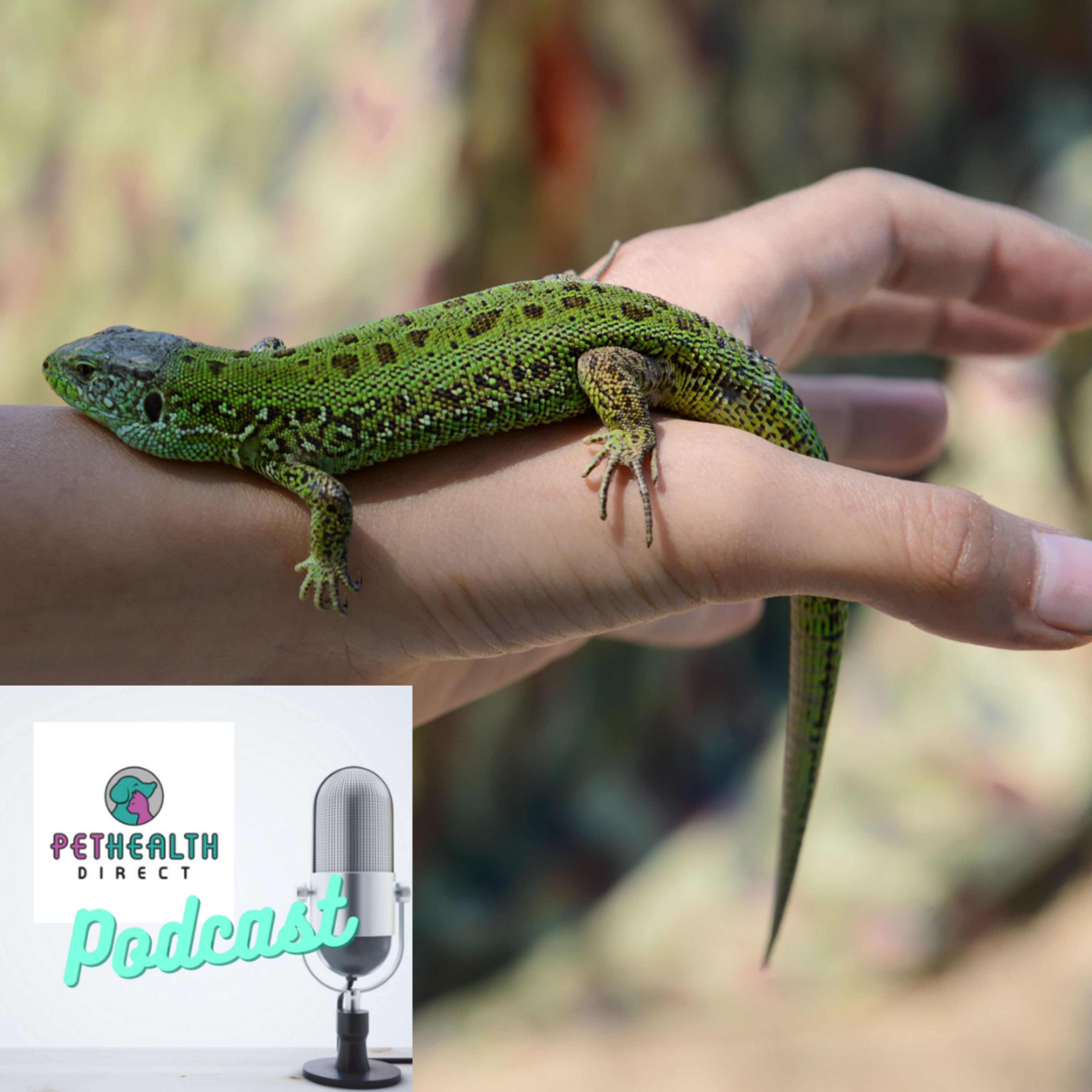 Pet Health DirectLizards as petsBuying a pet and looking after it is a huge responsibility. As a pet owner you have to make sure that your pet has a suitable environment to live that allows it to express natural behaviours like they would in the wild. Correct nutrition is also important as well as lots of loving care and attention, allowing you to notice when your pet is not feeling well and may need to be taken to the vet.
This episode is taken from Vetstream's Vetlexicon Exotis and provides information to help you understand more about the health and...2021-02-0206 min
Pet Health DirectLizards as petsBuying a pet and looking after it is a huge responsibility. As a pet owner you have to make sure that your pet has a suitable environment to live that allows it to express natural behaviours like they would in the wild. Correct nutrition is also important as well as lots of loving care and attention, allowing you to notice when your pet is not feeling well and may need to be taken to the vet.
This episode is taken from Vetstream's Vetlexicon Exotis and provides information to help you understand more about the health and...2021-02-0206 min Pet Health DirectFeeding your lizardThe diet of lizards will differ depending on where they are from. Lizards like iguanas are herbivorous, eating plants and leaves; other lizards like the Bearded Dragon eat insects when they are young and developing but change to a diet with more salad and greens as they mature. Many of the large lizards like the Monitors are omnivorous which means that they eat meat, eggs, fish, insects and leaves.
In the wild a lizard would eat whatever types of insects he could catch, depending on the season. In captivity you will have to buy live insects for...2021-02-0205 min
Pet Health DirectFeeding your lizardThe diet of lizards will differ depending on where they are from. Lizards like iguanas are herbivorous, eating plants and leaves; other lizards like the Bearded Dragon eat insects when they are young and developing but change to a diet with more salad and greens as they mature. Many of the large lizards like the Monitors are omnivorous which means that they eat meat, eggs, fish, insects and leaves.
In the wild a lizard would eat whatever types of insects he could catch, depending on the season. In captivity you will have to buy live insects for...2021-02-0205 min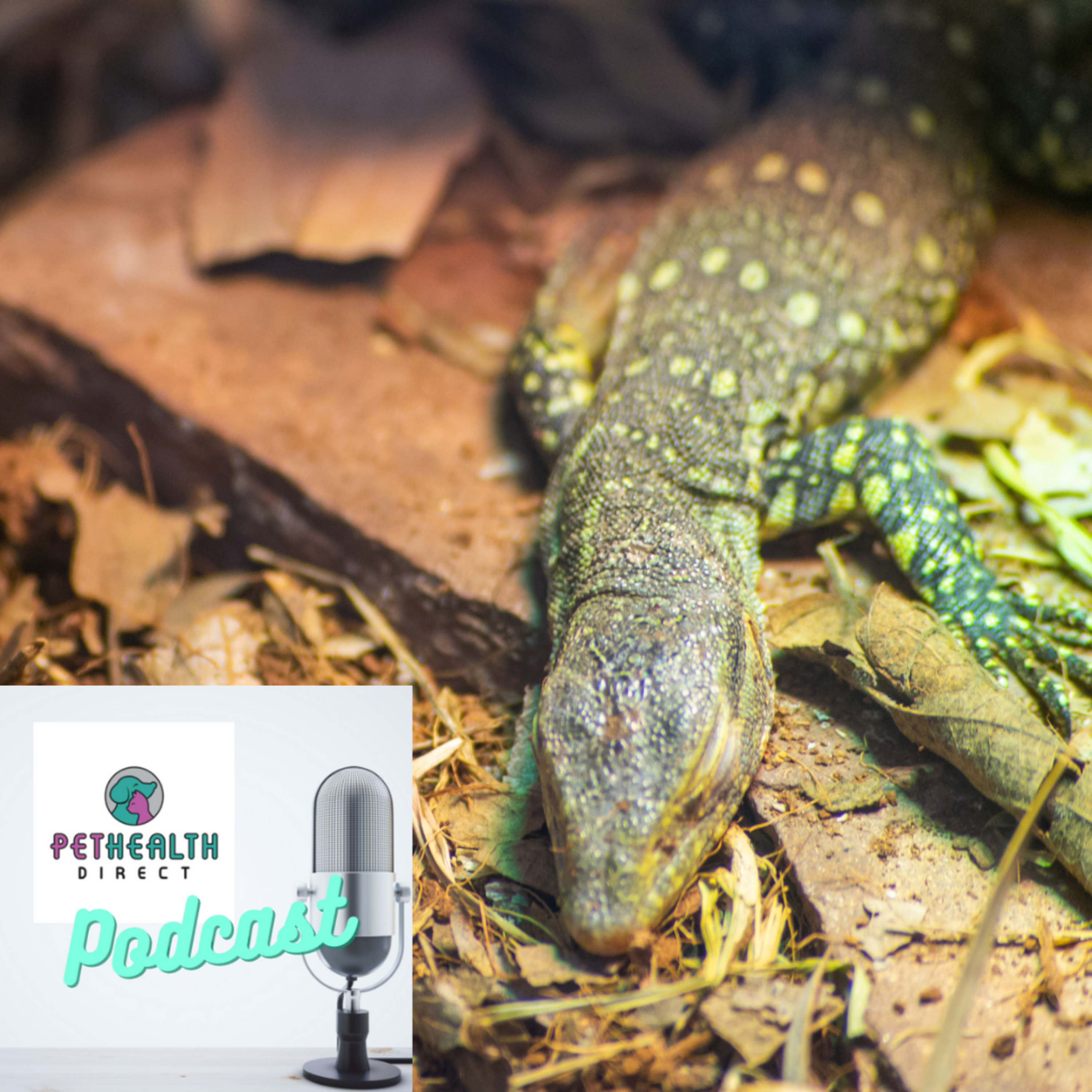 Pet Health DirectDigestive disorders in lizardsThe digestive system converts food into energy. In lizards, left over waste is expelled through the vent which is the reptile equivalent of the anus in mammals. The digestive tract of your lizard consists of the mouth, stomach, intestines and vent.
This episode is taken from Vetstream's Vetlexicon Exotis and provides information to help you understand more about the health and welfare of your lizard
Select this link to read more information about the health and welfare of your lizard.2021-02-0206 min
Pet Health DirectDigestive disorders in lizardsThe digestive system converts food into energy. In lizards, left over waste is expelled through the vent which is the reptile equivalent of the anus in mammals. The digestive tract of your lizard consists of the mouth, stomach, intestines and vent.
This episode is taken from Vetstream's Vetlexicon Exotis and provides information to help you understand more about the health and welfare of your lizard
Select this link to read more information about the health and welfare of your lizard.2021-02-0206 min Vetlexicon (Canis, Felis, Lapis, Exotis, Equis and Bovis)Vagal Indigestion in cattle - Vetlexicon BovisVagal indigestion in cattle
Cause:
Vagal indigestion is characterized by dysfunction of reticulorumen, which hinders the passage of ingesta from the reticulorumen, abomasum or both, resulting in the distension of the abdomen.
Vagal indigestion is a syndrome which is seen in cattle and also less commonly sheep.
Signs: generally non-specific and depend on the location of the obstruction/problem; decreased milk yield and appetite, abnormal feces including quantity, abdominal distension with potentially recurrent bloating.
Diagnosis:
Diagnosis is often based on clinical presentation and examination in the field; however this could potentially lead to an...2021-02-0114 min
Vetlexicon (Canis, Felis, Lapis, Exotis, Equis and Bovis)Vagal Indigestion in cattle - Vetlexicon BovisVagal indigestion in cattle
Cause:
Vagal indigestion is characterized by dysfunction of reticulorumen, which hinders the passage of ingesta from the reticulorumen, abomasum or both, resulting in the distension of the abdomen.
Vagal indigestion is a syndrome which is seen in cattle and also less commonly sheep.
Signs: generally non-specific and depend on the location of the obstruction/problem; decreased milk yield and appetite, abnormal feces including quantity, abdominal distension with potentially recurrent bloating.
Diagnosis:
Diagnosis is often based on clinical presentation and examination in the field; however this could potentially lead to an...2021-02-0114 min Vetlexicon (Canis, Felis, Lapis, Exotis, Equis and Bovis)Cannabis poisoning in dogs - Vetlexicon CanisCannabis poisoning in Dogs
From plant Cannabis sativa - usually found in the form of cannabis/marijuana (dried leaves and flowers of plant) or hashish (dried resin from flower tips).
Cause: accidental ingestion (or inhalation) of cannabis containing tetrahydrocannabinol (THC), which is the principal active ingredient.
Signs: acute onset is usually within 1-3 hours: ataxia, drowsiness, stupor, behavioral changes, bradycardia, hypotension, hypothermia, increased appetite, conjunctival injection.
Treatment: emesis (within 1 h of ingestion, only if asymptomatic), absorbents (activated charcoal), supportive therapy (intravenous fluids, warming).
Prognosis: good, recovery usually within 24-96 h.
To access a written...2021-02-0112 min
Vetlexicon (Canis, Felis, Lapis, Exotis, Equis and Bovis)Cannabis poisoning in dogs - Vetlexicon CanisCannabis poisoning in Dogs
From plant Cannabis sativa - usually found in the form of cannabis/marijuana (dried leaves and flowers of plant) or hashish (dried resin from flower tips).
Cause: accidental ingestion (or inhalation) of cannabis containing tetrahydrocannabinol (THC), which is the principal active ingredient.
Signs: acute onset is usually within 1-3 hours: ataxia, drowsiness, stupor, behavioral changes, bradycardia, hypotension, hypothermia, increased appetite, conjunctival injection.
Treatment: emesis (within 1 h of ingestion, only if asymptomatic), absorbents (activated charcoal), supportive therapy (intravenous fluids, warming).
Prognosis: good, recovery usually within 24-96 h.
To access a written...2021-02-0112 min Vetlexicon (Canis, Felis, Lapis, Exotis, Equis and Bovis)Canine neural angiostrongylosis - Vetlexicon CanisCanine neural angiostrongylosis
From plant Cannabis sativa - usually found in the form of cannabis/marijuana (dried leaves and flowers of plant) or hashish (dried resin from flower tips).
Cause: accidental ingestion (or inhalation) of cannabis containing tetrahydrocannabinol (THC), which is the principal active ingredient.
Signs: acute onset is usually within 1-3 hours: ataxia, drowsiness, stupor, behavioral changes, bradycardia, hypotension, hypothermia, increased appetite, conjunctival injection.
Treatment: emesis (within 1 h of ingestion, only if asymptomatic), absorbents (activated charcoal), supportive therapy (intravenous fluids, warming).
Prognosis: good, recovery usually within 24-96 h.
To access a written copy...2021-02-0109 min
Vetlexicon (Canis, Felis, Lapis, Exotis, Equis and Bovis)Canine neural angiostrongylosis - Vetlexicon CanisCanine neural angiostrongylosis
From plant Cannabis sativa - usually found in the form of cannabis/marijuana (dried leaves and flowers of plant) or hashish (dried resin from flower tips).
Cause: accidental ingestion (or inhalation) of cannabis containing tetrahydrocannabinol (THC), which is the principal active ingredient.
Signs: acute onset is usually within 1-3 hours: ataxia, drowsiness, stupor, behavioral changes, bradycardia, hypotension, hypothermia, increased appetite, conjunctival injection.
Treatment: emesis (within 1 h of ingestion, only if asymptomatic), absorbents (activated charcoal), supportive therapy (intravenous fluids, warming).
Prognosis: good, recovery usually within 24-96 h.
To access a written copy...2021-02-0109 min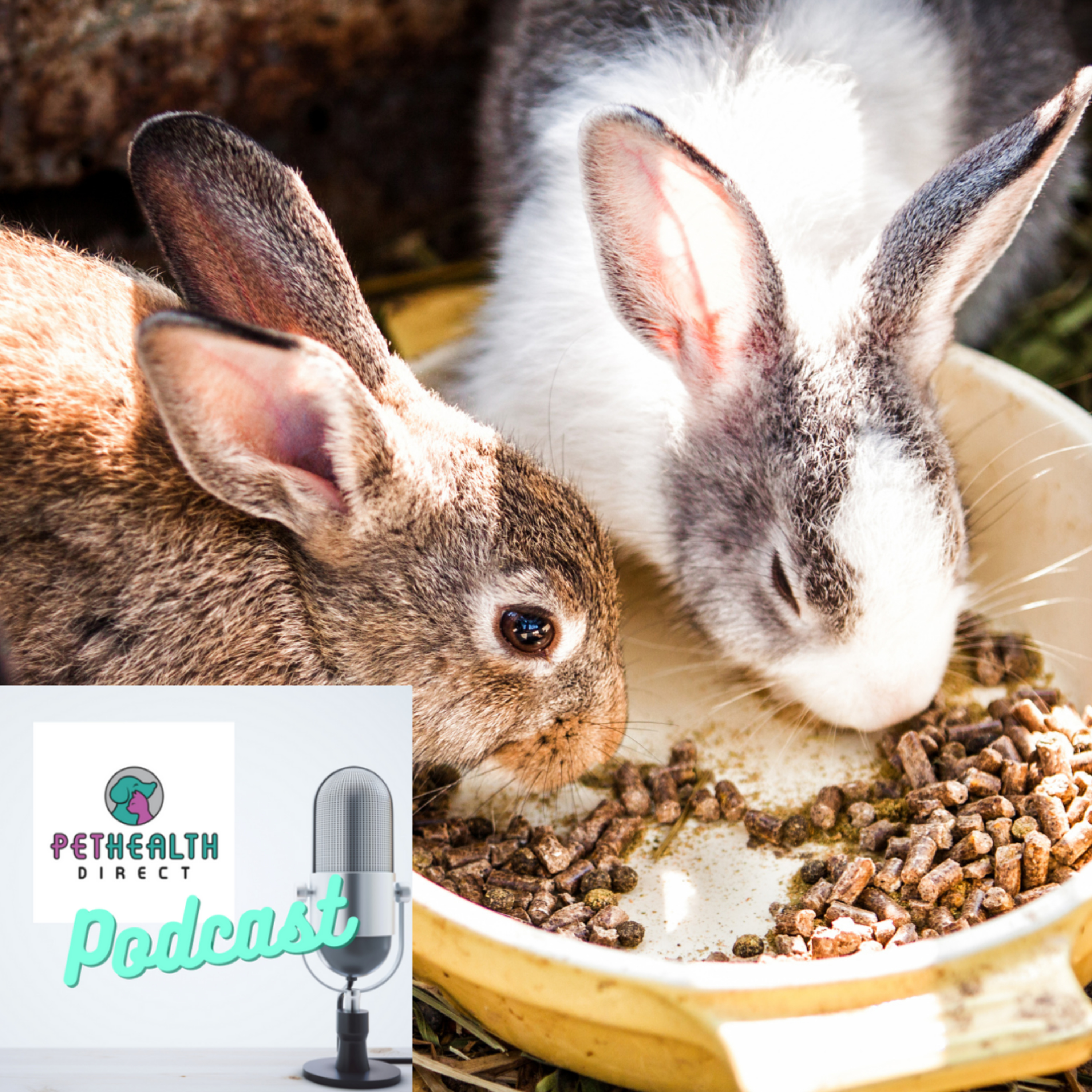 Pet Health DirectGastrointestinal stasis in rabbitsGastrointestinal stasis in rabbits
When a rabbit's digestive system is compromised, either due to illness, pain or stress, then their hydration and food intake is likely to be reduced, which can lead to a reduction in gut motility (gastrointestinal (GI) stasis). This is a serious condition and you MUST seek veterinary advice immediately.
This episode is taken from Vetstream's Vetlexicon Lapis and provides information to help you understand more about the health and welfare of your rabbit.
Select this link to read more information about the health and welfare of your rabbit2021-01-3108 min
Pet Health DirectGastrointestinal stasis in rabbitsGastrointestinal stasis in rabbits
When a rabbit's digestive system is compromised, either due to illness, pain or stress, then their hydration and food intake is likely to be reduced, which can lead to a reduction in gut motility (gastrointestinal (GI) stasis). This is a serious condition and you MUST seek veterinary advice immediately.
This episode is taken from Vetstream's Vetlexicon Lapis and provides information to help you understand more about the health and welfare of your rabbit.
Select this link to read more information about the health and welfare of your rabbit2021-01-3108 min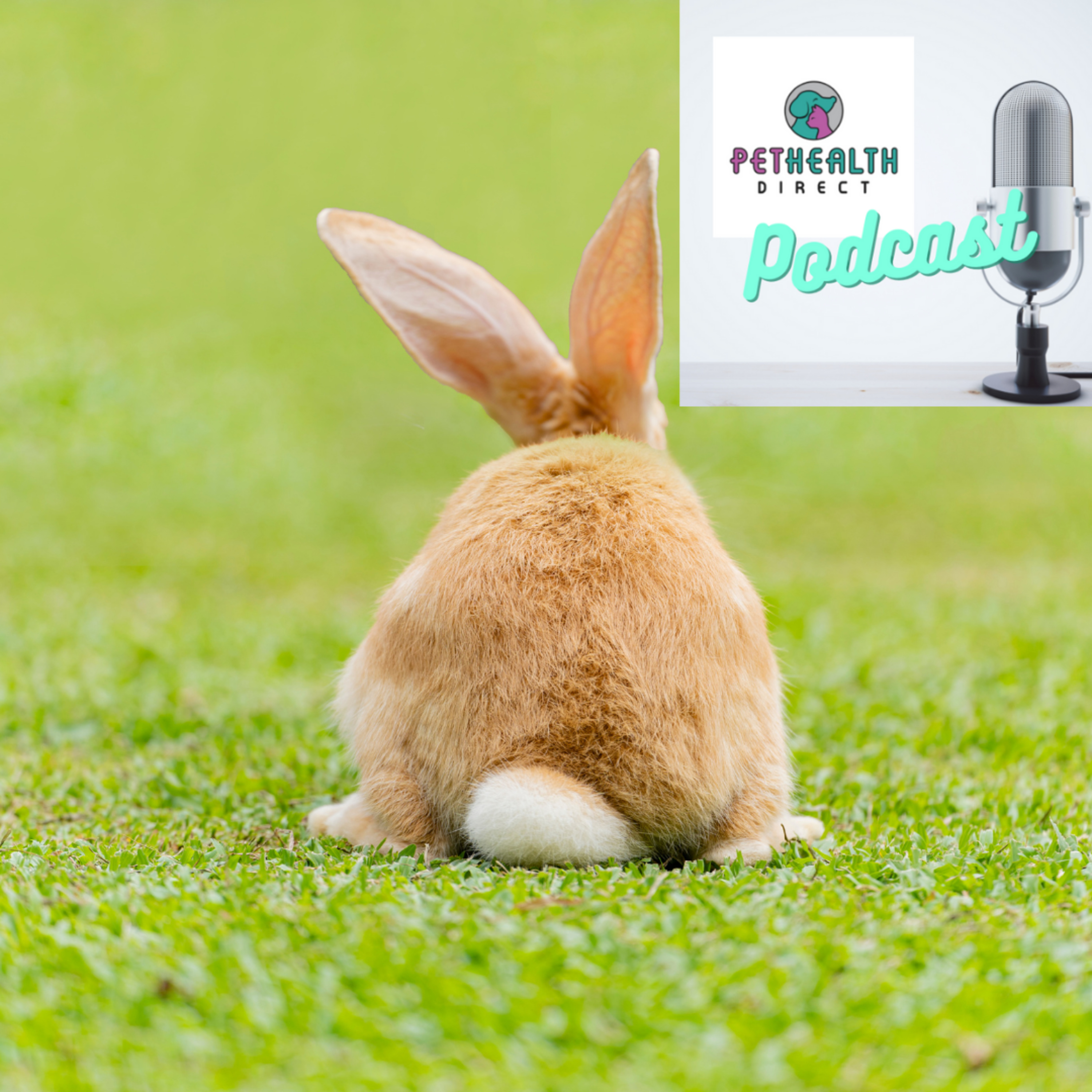 Pet Health DirectDirty bottom syndrome in rabbitsDirty bottom syndrome in rabbits
There are a variety of reasons why rabbits may suffer with a dirty bottom, either with feces or urine, both of which are potential attractions for flies, especially in warmer months of the year when flystrike is a common occurrence. Having urine or faeces around their bottom can also cause the skin to become sore, inflamed and infected, so it is important to understand why the rabbit is affected and what can be done to resolve the problem.
This episode is taken from Vetstream's Vetlexicon Lapis and provides information to...2021-01-3111 min
Pet Health DirectDirty bottom syndrome in rabbitsDirty bottom syndrome in rabbits
There are a variety of reasons why rabbits may suffer with a dirty bottom, either with feces or urine, both of which are potential attractions for flies, especially in warmer months of the year when flystrike is a common occurrence. Having urine or faeces around their bottom can also cause the skin to become sore, inflamed and infected, so it is important to understand why the rabbit is affected and what can be done to resolve the problem.
This episode is taken from Vetstream's Vetlexicon Lapis and provides information to...2021-01-3111 min Pet Health DirectCaring for your rabbit in the winterCaring for your rabbit in the winter
Rabbits have evolved to be able to withstand the winter weather we get in the UK, but whether or not you keep your rabbit as a houserabbit or outside, they do require some special care and considerations throughout the colder months of the year, to ensure they remain happy and healthy.
This episode is taken from Vetstream's Vetlexicon Lapis and provides information to help you understand more about the health and welfare of your rabbit.
Select this link to read more information about the health and...2021-01-3111 min
Pet Health DirectCaring for your rabbit in the winterCaring for your rabbit in the winter
Rabbits have evolved to be able to withstand the winter weather we get in the UK, but whether or not you keep your rabbit as a houserabbit or outside, they do require some special care and considerations throughout the colder months of the year, to ensure they remain happy and healthy.
This episode is taken from Vetstream's Vetlexicon Lapis and provides information to help you understand more about the health and welfare of your rabbit.
Select this link to read more information about the health and...2021-01-3111 min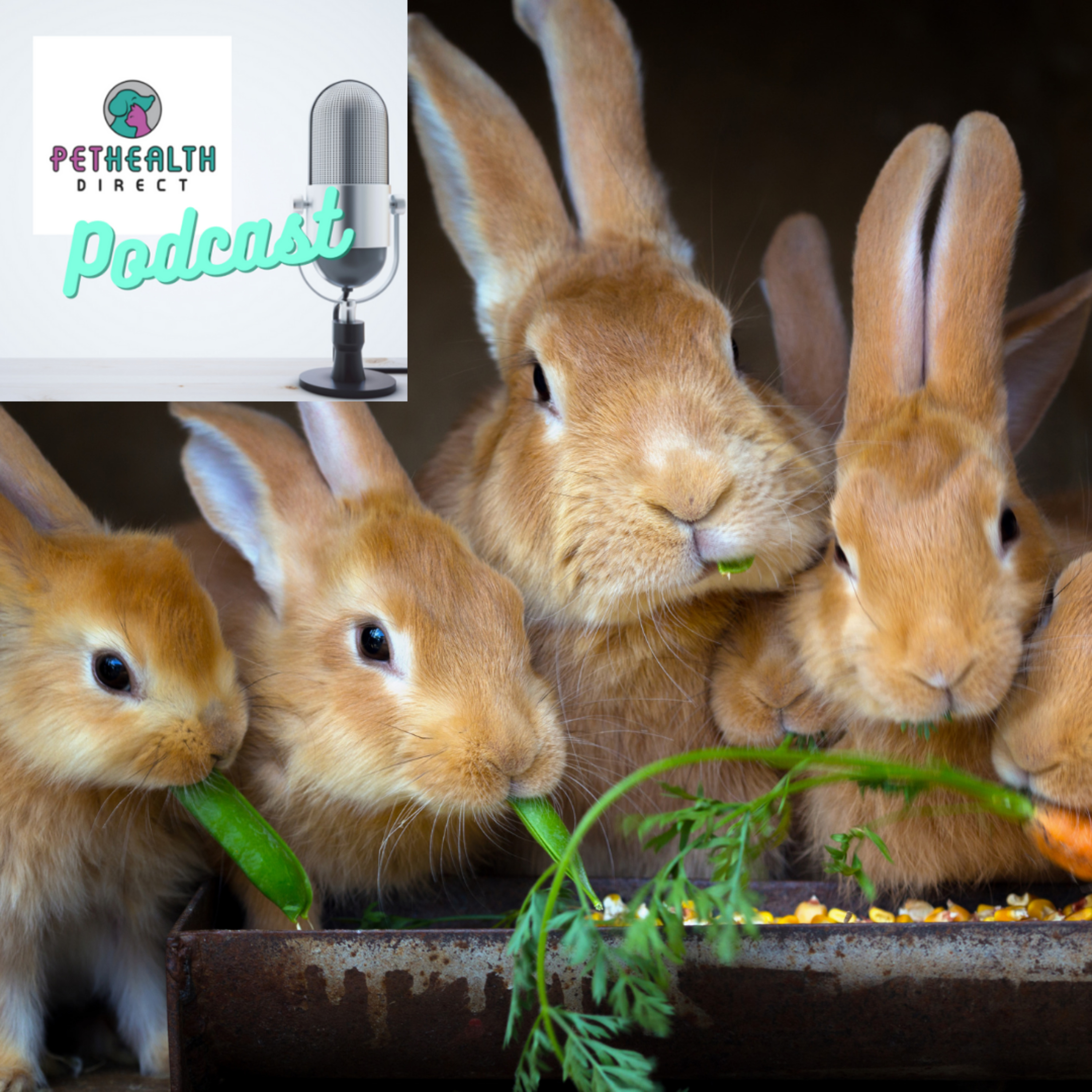 Pet Health DirectFeeding your rabbitFeeding your rabbit
The phrase 'you are what you eat' has never been truer for the rabbit. Recent research by veterinary surgeons and rabbit food companies has shown that most of the common illnesses that rabbits suffer from could be prevented by feeding them a healthy diet. Unfortunately, many pet rabbits are being fed a diet that is the rabbit equivalent of 'junk food'. Feeding your rabbit the correct diet is not difficult - simply follow our guidelines.
This episode is taken from Vetstream's Vetlexicon Lapis and provides information to help you understand more about...2021-01-3107 min
Pet Health DirectFeeding your rabbitFeeding your rabbit
The phrase 'you are what you eat' has never been truer for the rabbit. Recent research by veterinary surgeons and rabbit food companies has shown that most of the common illnesses that rabbits suffer from could be prevented by feeding them a healthy diet. Unfortunately, many pet rabbits are being fed a diet that is the rabbit equivalent of 'junk food'. Feeding your rabbit the correct diet is not difficult - simply follow our guidelines.
This episode is taken from Vetstream's Vetlexicon Lapis and provides information to help you understand more about...2021-01-3107 min Vetlexicon (Canis, Felis, Lapis, Exotis, Equis and Bovis)Vasculitis in horses - Vetlexicon EquisVasculitis in Horses
Cause: immune-mediated hypersensitivity; infection (EVA, EIA, anaplasma, EHV); toxin (including drug-induced); hepatopathy; photo-activated; neoplasia.
Signs: edema, erythema, subcutaneous hemorrhage including mucosal petechiae and ecchymosis, crust, ulcers and serum oozing on distal limbs, face, abdomen and ears. Reluctance to move, pyrexia, inappetence, depression and weight loss. Secondary cellulitis, thrombophlebitis, laminitis and pneumonia have been described.
Diagnosis: clinical history, histopathology, response to medication.
Treatment: treatment of underlying disease; therapeutic antimicrobial therapy; systemic glucocorticoids in immune-mediated disease; NSAIDs. If edema is severe then intensive care may be required for fluid therapy, hydrotherapy and a tracheostomy if laryngeal obstruction...2021-01-3119 min
Vetlexicon (Canis, Felis, Lapis, Exotis, Equis and Bovis)Vasculitis in horses - Vetlexicon EquisVasculitis in Horses
Cause: immune-mediated hypersensitivity; infection (EVA, EIA, anaplasma, EHV); toxin (including drug-induced); hepatopathy; photo-activated; neoplasia.
Signs: edema, erythema, subcutaneous hemorrhage including mucosal petechiae and ecchymosis, crust, ulcers and serum oozing on distal limbs, face, abdomen and ears. Reluctance to move, pyrexia, inappetence, depression and weight loss. Secondary cellulitis, thrombophlebitis, laminitis and pneumonia have been described.
Diagnosis: clinical history, histopathology, response to medication.
Treatment: treatment of underlying disease; therapeutic antimicrobial therapy; systemic glucocorticoids in immune-mediated disease; NSAIDs. If edema is severe then intensive care may be required for fluid therapy, hydrotherapy and a tracheostomy if laryngeal obstruction...2021-01-3119 min Vetlexicon (Canis, Felis, Lapis, Exotis, Equis and Bovis)Penile squamous cell carcinoma in horses - Vetlexicon EquisPenile squamous cell carcinoma in horses
Squamous papillomas, squamous cell carcinomas, melanomas and sarcoids are the most common tumors of the penis seen in the horse.
The penile tumor is mostly seen in geldings and is more common in the aged gelding.
Benign and malignant forms occur. The former are more common in older geldings while the latter is more common in geldings under 12-13 years of age.
Cause: precarcinomatous changes caused by smegma.
Signs: clinically two forms can be recognized:
Proliferative lesion.
Ulcerative/destructive lesion.
Mixed forms may also occur.
The early precancerous stage...2021-01-3016 min
Vetlexicon (Canis, Felis, Lapis, Exotis, Equis and Bovis)Penile squamous cell carcinoma in horses - Vetlexicon EquisPenile squamous cell carcinoma in horses
Squamous papillomas, squamous cell carcinomas, melanomas and sarcoids are the most common tumors of the penis seen in the horse.
The penile tumor is mostly seen in geldings and is more common in the aged gelding.
Benign and malignant forms occur. The former are more common in older geldings while the latter is more common in geldings under 12-13 years of age.
Cause: precarcinomatous changes caused by smegma.
Signs: clinically two forms can be recognized:
Proliferative lesion.
Ulcerative/destructive lesion.
Mixed forms may also occur.
The early precancerous stage...2021-01-3016 min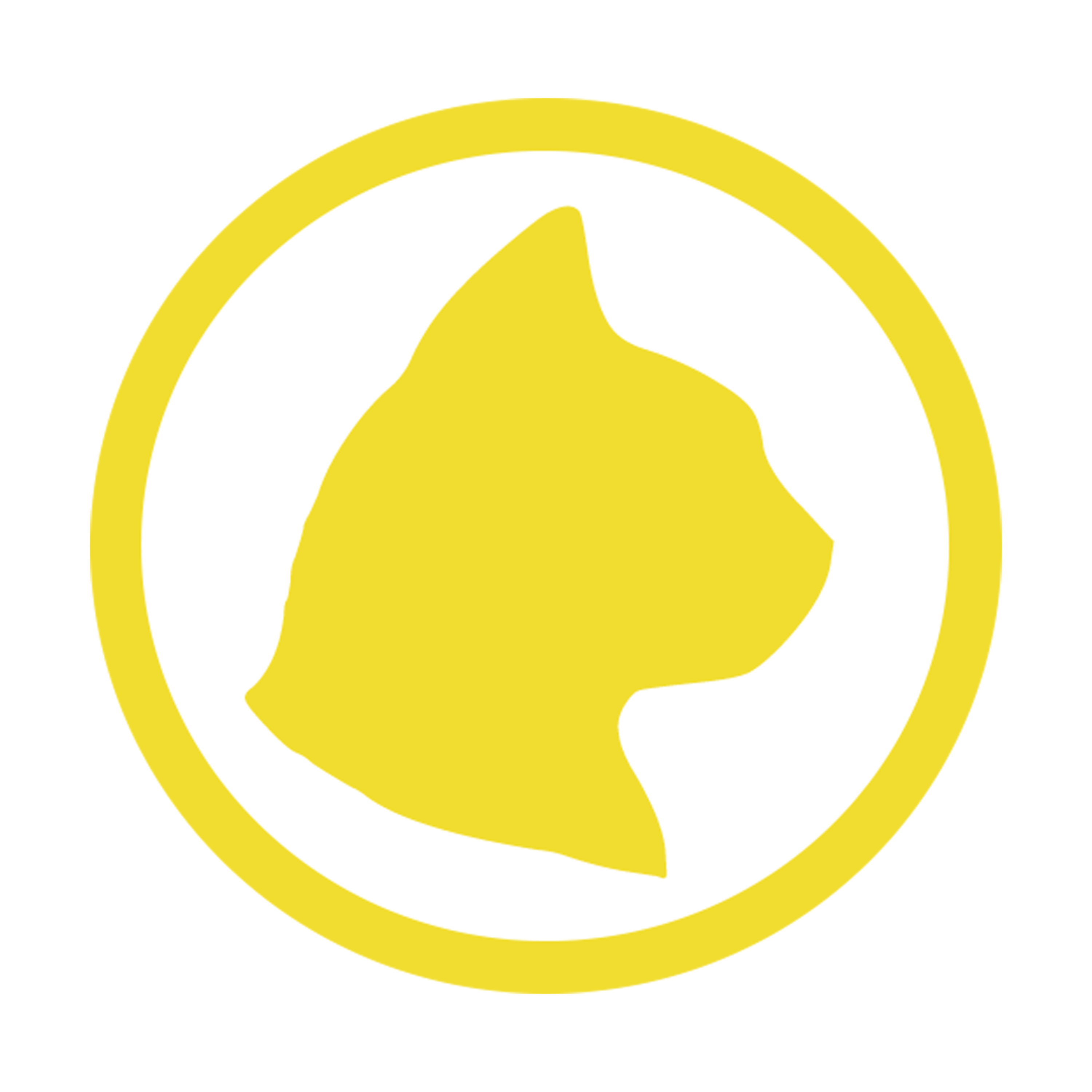 Vetlexicon (Canis, Felis, Lapis, Exotis, Equis and Bovis)Patellar fracture and dental anomaly syndrome (PADS) in cats - Vetlexicon FelisPatellar fracture and dental anomaly syndrome (PADS) in cats
Cause: unknown, hereditary cause suspected. Affected cats prone to pathological fractures.
Signs: lameness, discharging sinuses around the mouth and chin, mandibular (and maxillary) osteomyelitis, persistent nail bed infections.
Diagnosis: radiographic changes showing typical fractures, presence of persistent deciduous teeth or absence of adult teeth with presence of unerupted teeth on CT scans.
Treatment: unknown for the syndrome. Individual fractures can be treated appropriately. Patellar fractures usually do well with conservative management. Persistent and unerupted teeth should be removed.
Prognosis: guarded, in over a third of cats they will...2021-01-3009 min
Vetlexicon (Canis, Felis, Lapis, Exotis, Equis and Bovis)Patellar fracture and dental anomaly syndrome (PADS) in cats - Vetlexicon FelisPatellar fracture and dental anomaly syndrome (PADS) in cats
Cause: unknown, hereditary cause suspected. Affected cats prone to pathological fractures.
Signs: lameness, discharging sinuses around the mouth and chin, mandibular (and maxillary) osteomyelitis, persistent nail bed infections.
Diagnosis: radiographic changes showing typical fractures, presence of persistent deciduous teeth or absence of adult teeth with presence of unerupted teeth on CT scans.
Treatment: unknown for the syndrome. Individual fractures can be treated appropriately. Patellar fractures usually do well with conservative management. Persistent and unerupted teeth should be removed.
Prognosis: guarded, in over a third of cats they will...2021-01-3009 min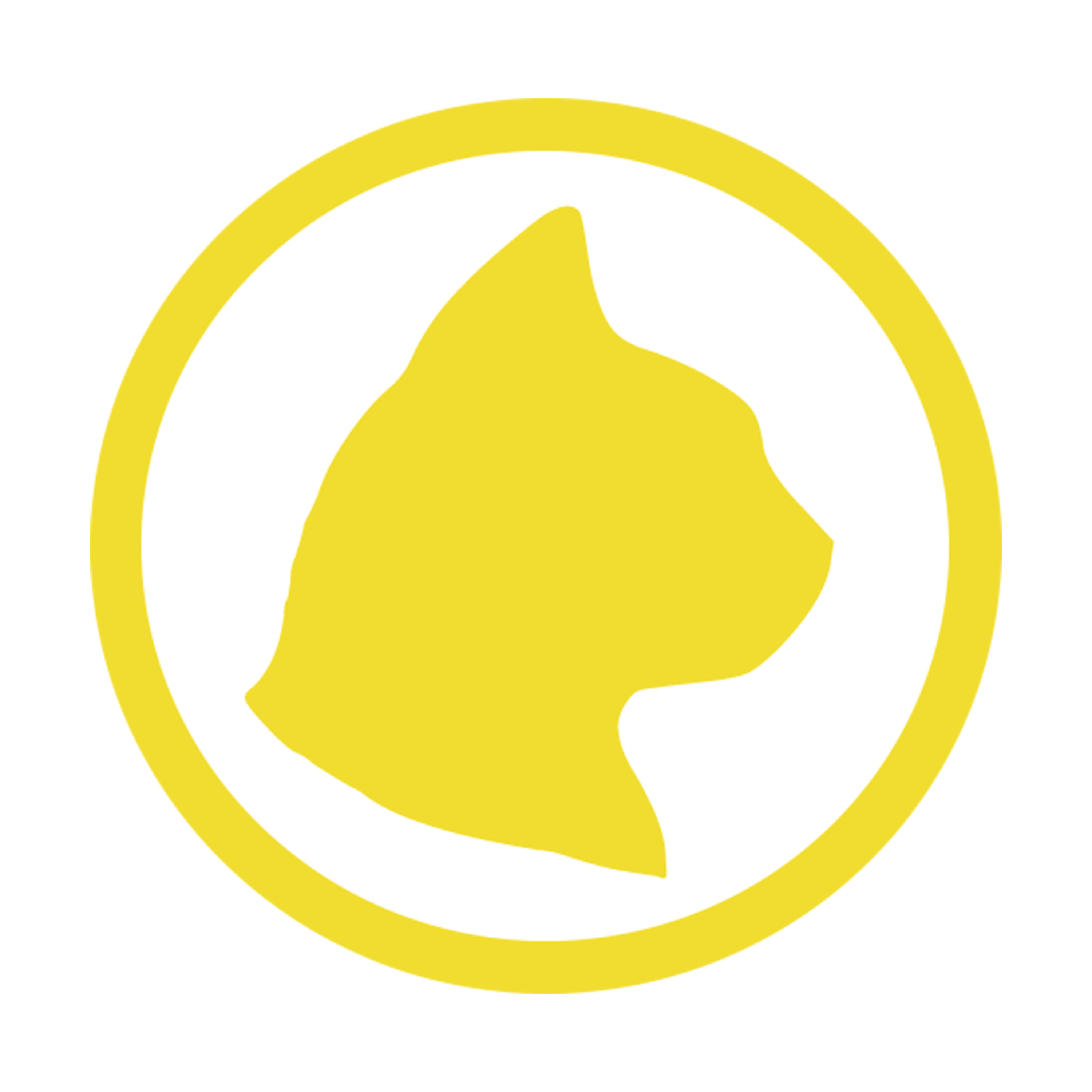 Vetlexicon (Canis, Felis, Lapis, Exotis, Equis and Bovis)Haw's Syndrome in cats - Vetlexicon FelisHaw's syndrome in cats
Cause: idiopathic but speculatively it may be associated with tapeworm infestation or virus infection.
Signs: a syndrome of prolapse of the third eyelids (nictitating membranes) often with diarrhea as well.
Occasionally cats can be ill but they will recover with supportive care.
Diagnosis: usually just on signs.
Treatment: none.
Prognosis: good, generally completely benign and self-limiting.
To access a written copy of this information on Vetlexicon Felis please visit this link
2021-01-2709 min
Vetlexicon (Canis, Felis, Lapis, Exotis, Equis and Bovis)Haw's Syndrome in cats - Vetlexicon FelisHaw's syndrome in cats
Cause: idiopathic but speculatively it may be associated with tapeworm infestation or virus infection.
Signs: a syndrome of prolapse of the third eyelids (nictitating membranes) often with diarrhea as well.
Occasionally cats can be ill but they will recover with supportive care.
Diagnosis: usually just on signs.
Treatment: none.
Prognosis: good, generally completely benign and self-limiting.
To access a written copy of this information on Vetlexicon Felis please visit this link
2021-01-2709 min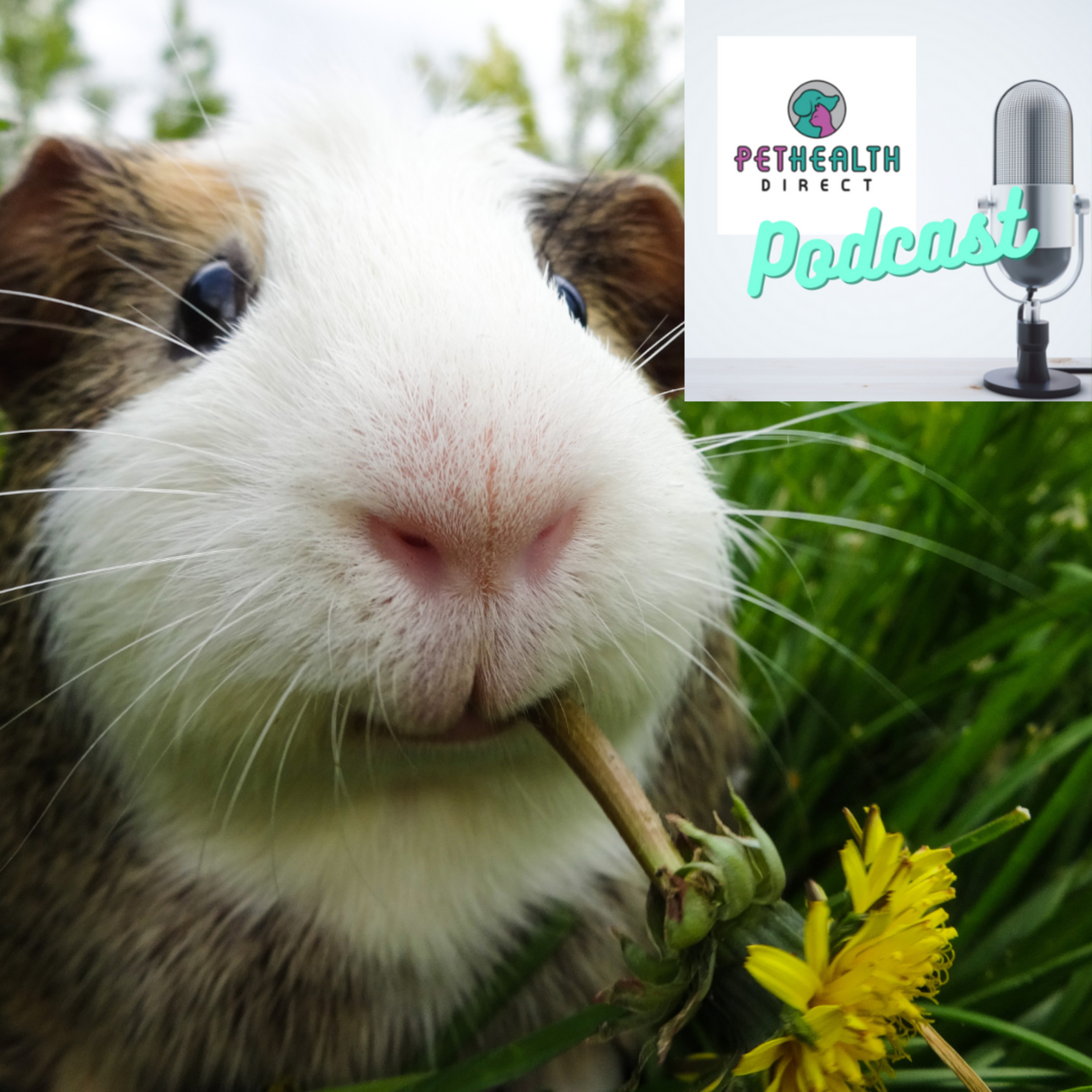 Pet Health DirectFeeding your guinea pigGuinea pigs come from Central and South America and live in extended family groups in areas of long grass. They make runs or pathways through the tall vegetation and eat as they go! In an ideal world, we would keep our guinea pigs in an uncut hay meadow, but then we'd never see them... and the average back garden is not a hay meadow!
This episode is taken from Vetstream's Vetlexicon Exotis and provides information to help you understand more about the health and welfare of your Guinea Pig.
Select this link to read more...2021-01-2706 min
Pet Health DirectFeeding your guinea pigGuinea pigs come from Central and South America and live in extended family groups in areas of long grass. They make runs or pathways through the tall vegetation and eat as they go! In an ideal world, we would keep our guinea pigs in an uncut hay meadow, but then we'd never see them... and the average back garden is not a hay meadow!
This episode is taken from Vetstream's Vetlexicon Exotis and provides information to help you understand more about the health and welfare of your Guinea Pig.
Select this link to read more...2021-01-2706 min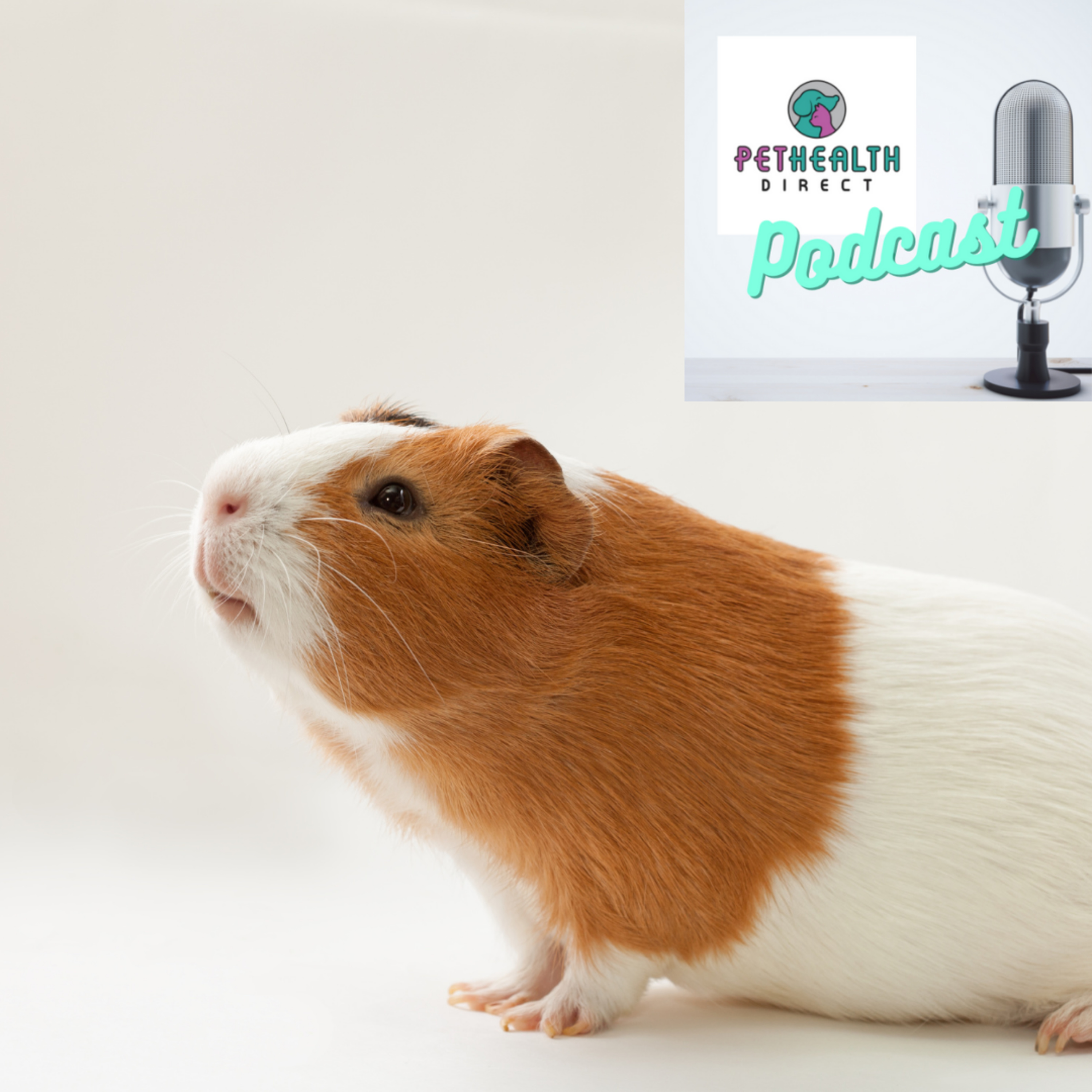 Pet Health DirectSkin tumours in guinea pigsGuinea pigs can be affected by a variety of skin tumours. Some of these are benign (generally harmless) and some can be malignant (cancerous). It is often not possible to diagnose what type a tumour is by looking at it and further diagnostics are often required to decide upon a diagnosis and treatment plan.
This episode is taken from Vetstream's Vetlexicon Exotis and provides information to help you understand more about the health and welfare of your guinea pig.
Select this link to read more information about the health and welfare of your guinea pig...2021-01-2705 min
Pet Health DirectSkin tumours in guinea pigsGuinea pigs can be affected by a variety of skin tumours. Some of these are benign (generally harmless) and some can be malignant (cancerous). It is often not possible to diagnose what type a tumour is by looking at it and further diagnostics are often required to decide upon a diagnosis and treatment plan.
This episode is taken from Vetstream's Vetlexicon Exotis and provides information to help you understand more about the health and welfare of your guinea pig.
Select this link to read more information about the health and welfare of your guinea pig...2021-01-2705 min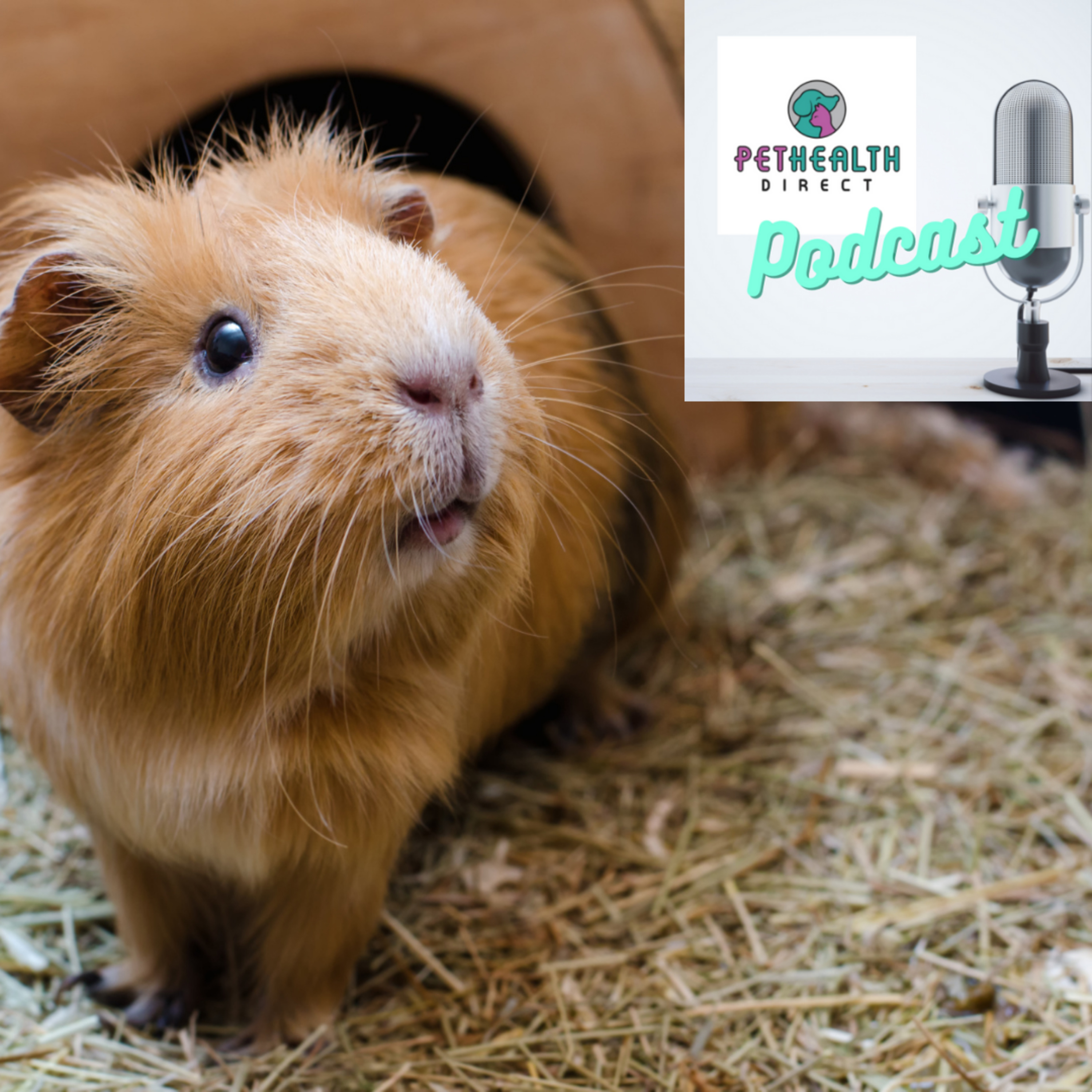 Pet Health DirectAnorexia in guinea pigsAnorexia is defined as a lack or loss of appetite for food. In guinea pigs this can be due to a variety of reasons. Whilst the underlying cause needs addressing, the guinea pig will also require supportive treatment while they aren't eating properly.
This episode is taken from Vetstream's Vetlexicon Exotis and provides information to help you understand more about the health and welfare of your guinea pig.
Select this link to read more information about the health and welfare of your guinea pig.2021-01-2709 min
Pet Health DirectAnorexia in guinea pigsAnorexia is defined as a lack or loss of appetite for food. In guinea pigs this can be due to a variety of reasons. Whilst the underlying cause needs addressing, the guinea pig will also require supportive treatment while they aren't eating properly.
This episode is taken from Vetstream's Vetlexicon Exotis and provides information to help you understand more about the health and welfare of your guinea pig.
Select this link to read more information about the health and welfare of your guinea pig.2021-01-2709 min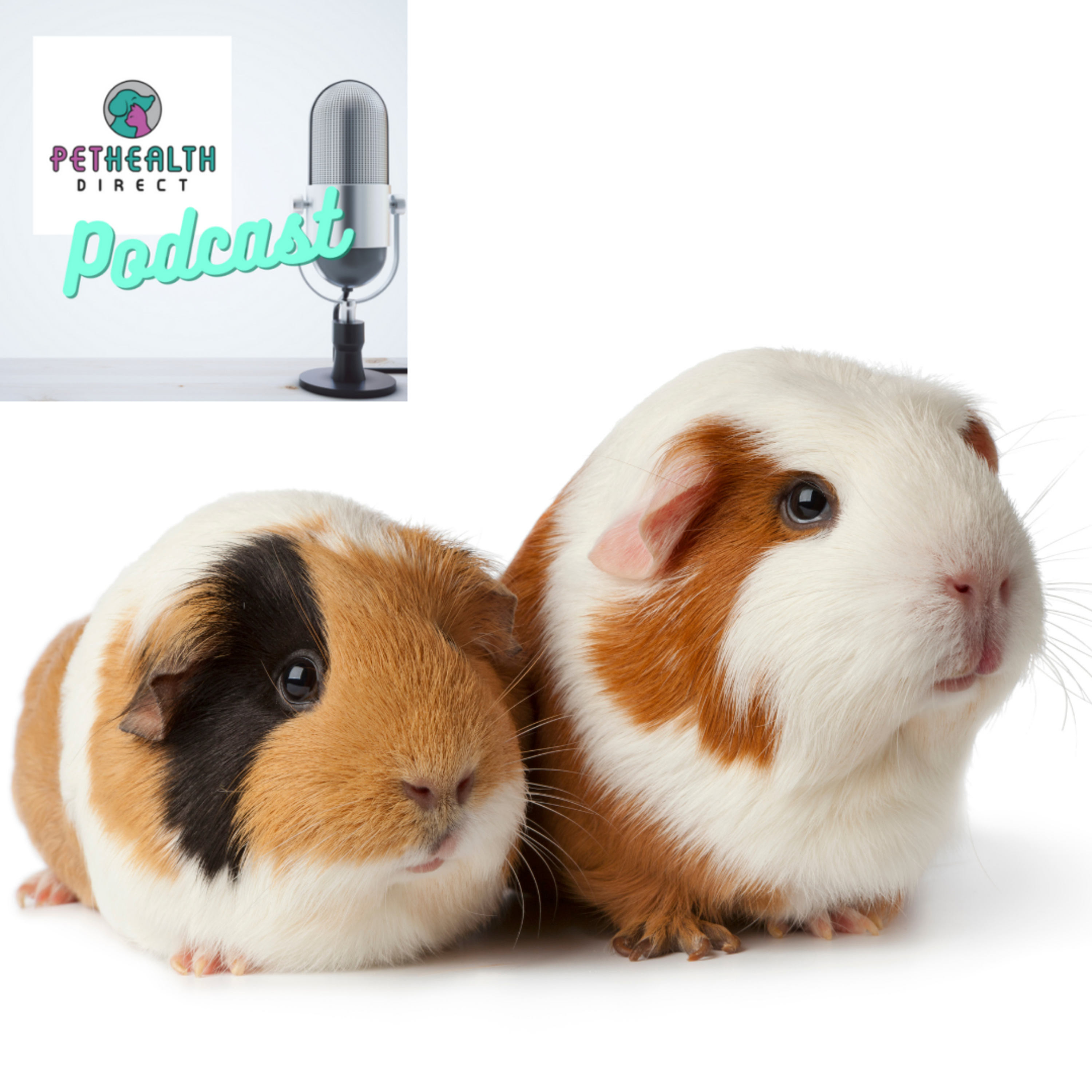 Pet Health DirectBumblefoot in guinea pigsBumblefoot is the common term used to describe a condition called pododermatitis. This is where the soles of the feet of the guinea pig become red, ulcerated and infected, usually by a bacteria called staphylococcus. The condition commonly happens with many species including caged parrots, rabbits and other rodent species such as rats and chinchillas.
This episode is taken from Vetstream's Vetlexicon Exotis and provides information to help you understand more about the health and welfare of your guinea pig.
Select this link to read more information about the health and welfare of your...2021-01-2705 min
Pet Health DirectBumblefoot in guinea pigsBumblefoot is the common term used to describe a condition called pododermatitis. This is where the soles of the feet of the guinea pig become red, ulcerated and infected, usually by a bacteria called staphylococcus. The condition commonly happens with many species including caged parrots, rabbits and other rodent species such as rats and chinchillas.
This episode is taken from Vetstream's Vetlexicon Exotis and provides information to help you understand more about the health and welfare of your guinea pig.
Select this link to read more information about the health and welfare of your...2021-01-2705 min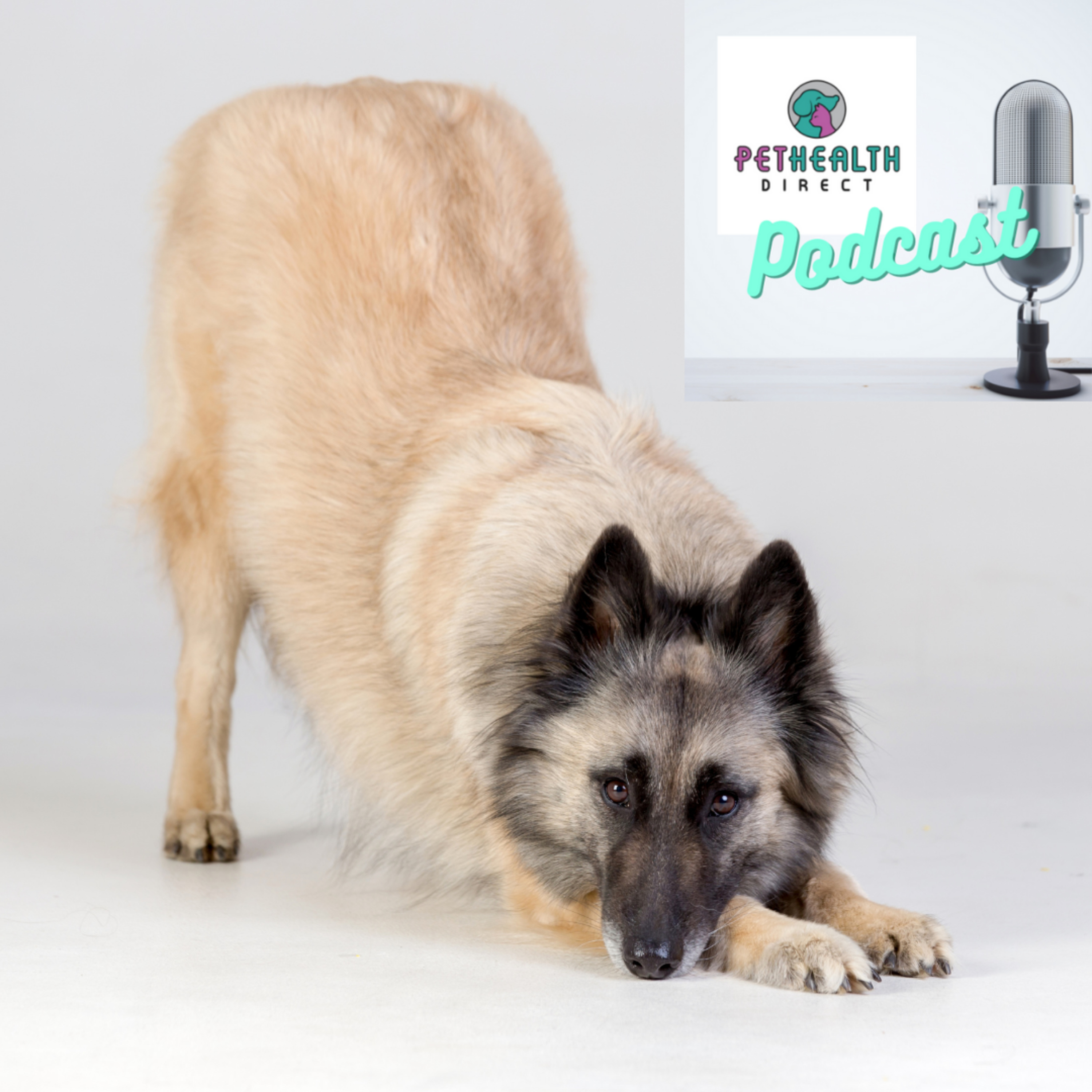 Pet Health DirectArthritis in dogsArthritis is a familiar problem for most vets. A large number of dogs, and an increasing number of cats, are diagnosed with arthritis. Arthritis simply means an inflammation of joints and animals with arthritis usually suffer with pain and stiffness in their joints. Arthritis is typically a problem in older pets. However, many animals with arthritis will have had signs of disease from an early age if their arthritis is caused by problems with joint development.
This episode is taken from Vetstream's Vetlexicon Canis and provides information to help dog owners understand more about this condition.
2021-01-1906 min
Pet Health DirectArthritis in dogsArthritis is a familiar problem for most vets. A large number of dogs, and an increasing number of cats, are diagnosed with arthritis. Arthritis simply means an inflammation of joints and animals with arthritis usually suffer with pain and stiffness in their joints. Arthritis is typically a problem in older pets. However, many animals with arthritis will have had signs of disease from an early age if their arthritis is caused by problems with joint development.
This episode is taken from Vetstream's Vetlexicon Canis and provides information to help dog owners understand more about this condition.
2021-01-1906 min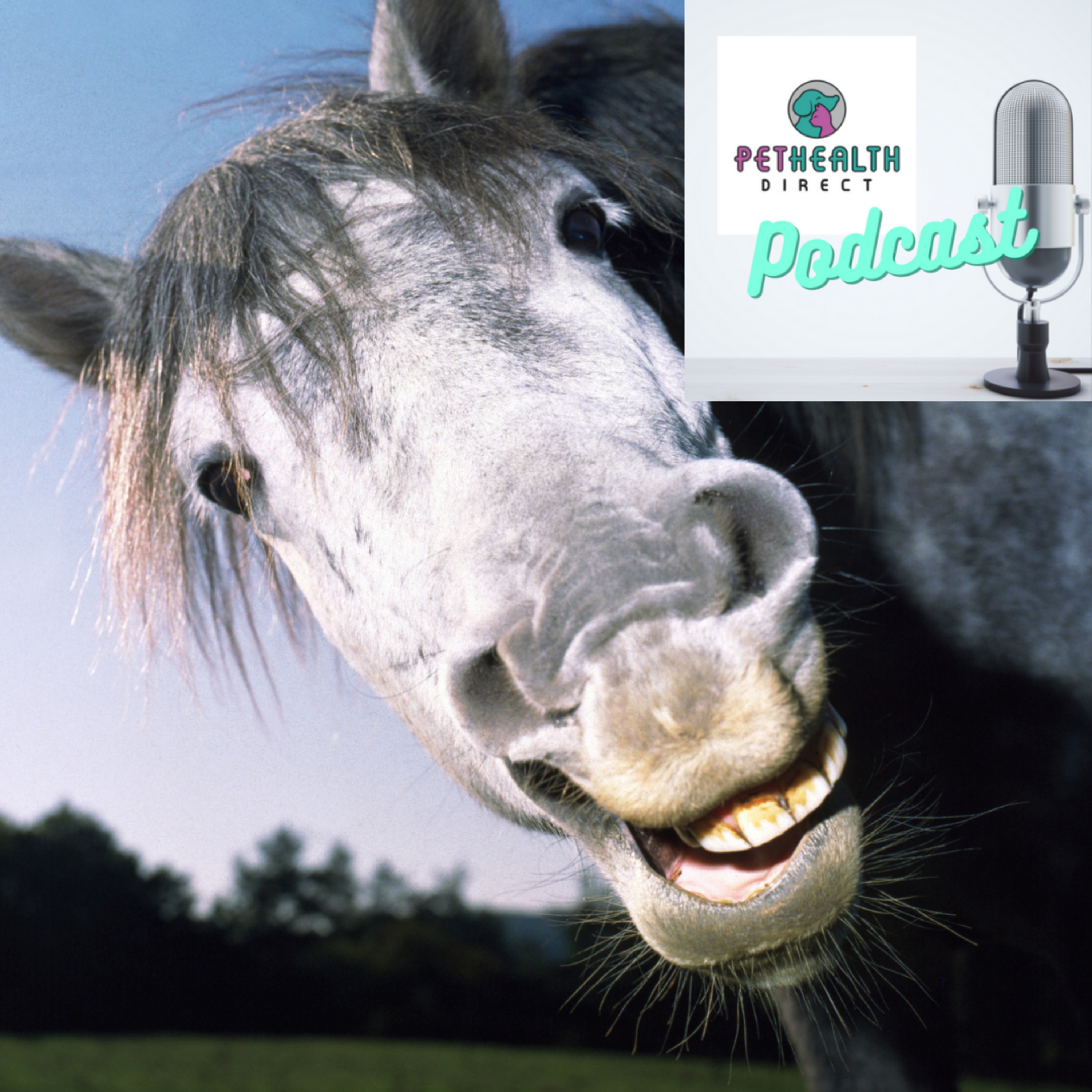 Pet Health DirectAzoturia in Horses'Azoturia', 'tying-up', Monday morning disease and setfast are all alternative terms used to describe the phenomenon known in the veterinary profession as exertional rhabdomyloysis (ER).
In the past, when horses were used more frequently as working animals, the condition was usually seen following a day of rest and high concentrate feeding on a Sunday hence the term Monday morning disease.
Exertional rhabdomyloysis probably the most common muscle disorder in horses and is a frequent cause of poor performance in the horse.
This...2021-01-1905 min
Pet Health DirectAzoturia in Horses'Azoturia', 'tying-up', Monday morning disease and setfast are all alternative terms used to describe the phenomenon known in the veterinary profession as exertional rhabdomyloysis (ER).
In the past, when horses were used more frequently as working animals, the condition was usually seen following a day of rest and high concentrate feeding on a Sunday hence the term Monday morning disease.
Exertional rhabdomyloysis probably the most common muscle disorder in horses and is a frequent cause of poor performance in the horse.
This...2021-01-1905 min Pet Health DirectBone problems in young dogsPuppies continue to grow and develop for months or years after birth. Giant breeds may not reach full adult size for 18 months or 2 years. During this growth period they are at particular risk from bone and joint disorders. Some of these are inherited such as hip and elbow dysplasia. Damage can also result from traumatic injury.
This episode is taken from Vetstream's Vetlexicon Canis and provides information to help dog owners understand more about this condition.
Select this link to read more information about the health and welfare of your dog2021-01-1304 min
Pet Health DirectBone problems in young dogsPuppies continue to grow and develop for months or years after birth. Giant breeds may not reach full adult size for 18 months or 2 years. During this growth period they are at particular risk from bone and joint disorders. Some of these are inherited such as hip and elbow dysplasia. Damage can also result from traumatic injury.
This episode is taken from Vetstream's Vetlexicon Canis and provides information to help dog owners understand more about this condition.
Select this link to read more information about the health and welfare of your dog2021-01-1304 min Pet Health DirectAbnormal eating habits and chewing in cats (Pica)If your cat licks, chews or eats items that are not food, it is showing a type of behaviour called 'pica'. This behaviour can be very difficult for both of you. Your belongings might never be safe and worse, your feline friend is at risk too. Items swallowed could cause an obstruction inside your cat or may be poisonous. There may be many reasons for your cat to show pica - this behaviour can be a sign of discomfort or may be the result of a medical problem. You must first find out why your pet is showing...2020-12-2306 min
Pet Health DirectAbnormal eating habits and chewing in cats (Pica)If your cat licks, chews or eats items that are not food, it is showing a type of behaviour called 'pica'. This behaviour can be very difficult for both of you. Your belongings might never be safe and worse, your feline friend is at risk too. Items swallowed could cause an obstruction inside your cat or may be poisonous. There may be many reasons for your cat to show pica - this behaviour can be a sign of discomfort or may be the result of a medical problem. You must first find out why your pet is showing...2020-12-2306 min Pet Health DirectBringing home a puppyAll puppies are cute and it is very tempting to acquire one almost by accident. Taking on a puppy is a big responsibility - remember it will not stay a puppy for long. Within a year you will have an adult dog which may be expected to live for 10 years or more. Before getting a puppy think about whether you are able to make a long-term commitment and, if you are, what kind of dog will best suit your lifestyle.
This episode is taken from Vetstream's Vetlexicon Canis and provides information to help dog owners understand more...2020-12-2306 min
Pet Health DirectBringing home a puppyAll puppies are cute and it is very tempting to acquire one almost by accident. Taking on a puppy is a big responsibility - remember it will not stay a puppy for long. Within a year you will have an adult dog which may be expected to live for 10 years or more. Before getting a puppy think about whether you are able to make a long-term commitment and, if you are, what kind of dog will best suit your lifestyle.
This episode is taken from Vetstream's Vetlexicon Canis and provides information to help dog owners understand more...2020-12-2306 min Pet Health DirectChocolate toxicosis in dogsChocolate toxicosis is a common problem in dogs. The signs can range from a simple stomach upset to life-threatening problems, depending on how much chocolate is ingested. Dark chocolate and baking chocolate are more toxic than white chocolate. Cacao bean mulch used in gardens can also cause chocolate toxicosis if a large enough amount is eaten.
This episode is taken from Vetstream's Vetlexicon Canis and provides information to help dog owners understand more about this condition.
Select this link to read more information about the health and welfare of your dog2020-12-2305 min
Pet Health DirectChocolate toxicosis in dogsChocolate toxicosis is a common problem in dogs. The signs can range from a simple stomach upset to life-threatening problems, depending on how much chocolate is ingested. Dark chocolate and baking chocolate are more toxic than white chocolate. Cacao bean mulch used in gardens can also cause chocolate toxicosis if a large enough amount is eaten.
This episode is taken from Vetstream's Vetlexicon Canis and provides information to help dog owners understand more about this condition.
Select this link to read more information about the health and welfare of your dog2020-12-2305 min